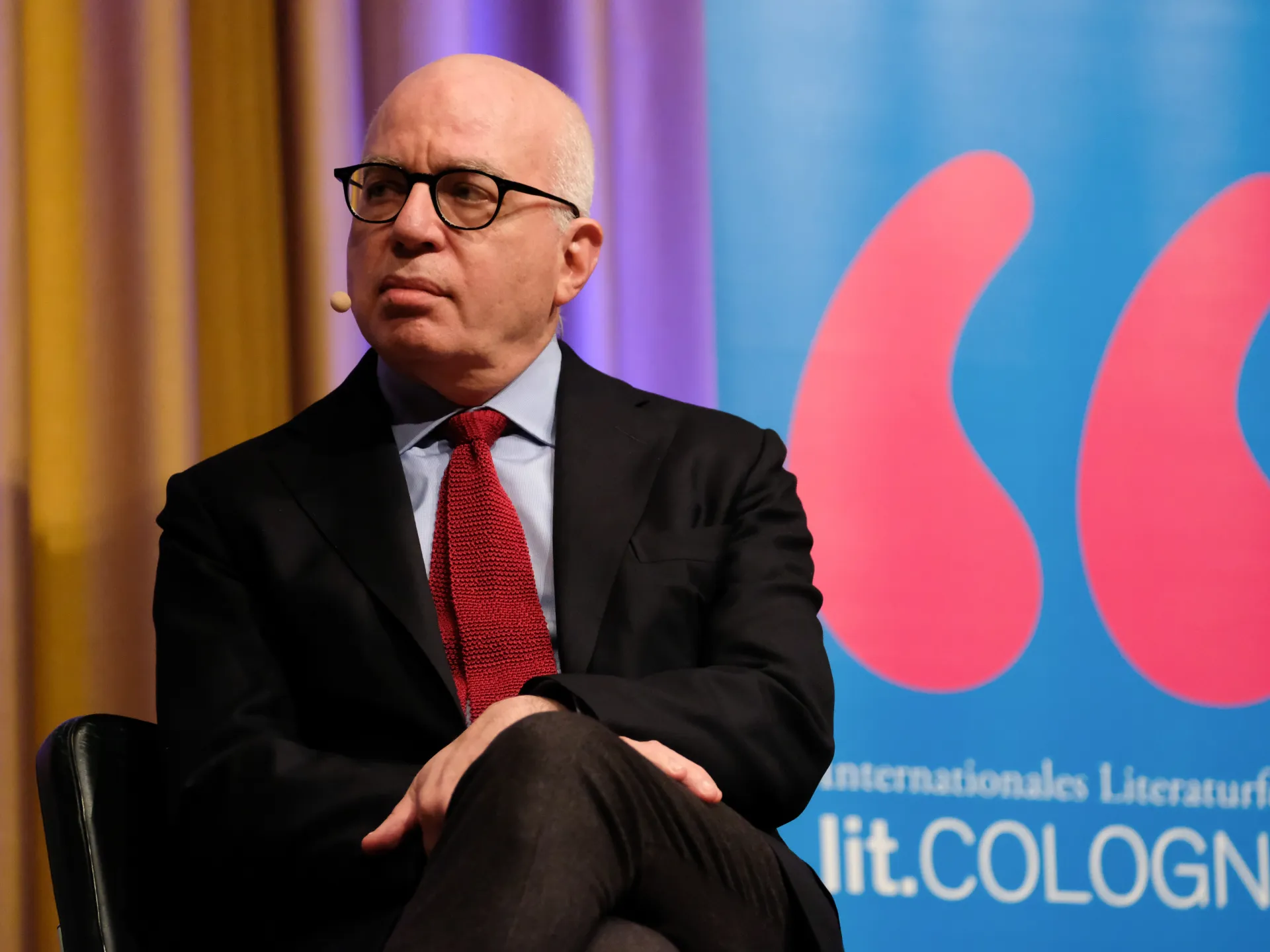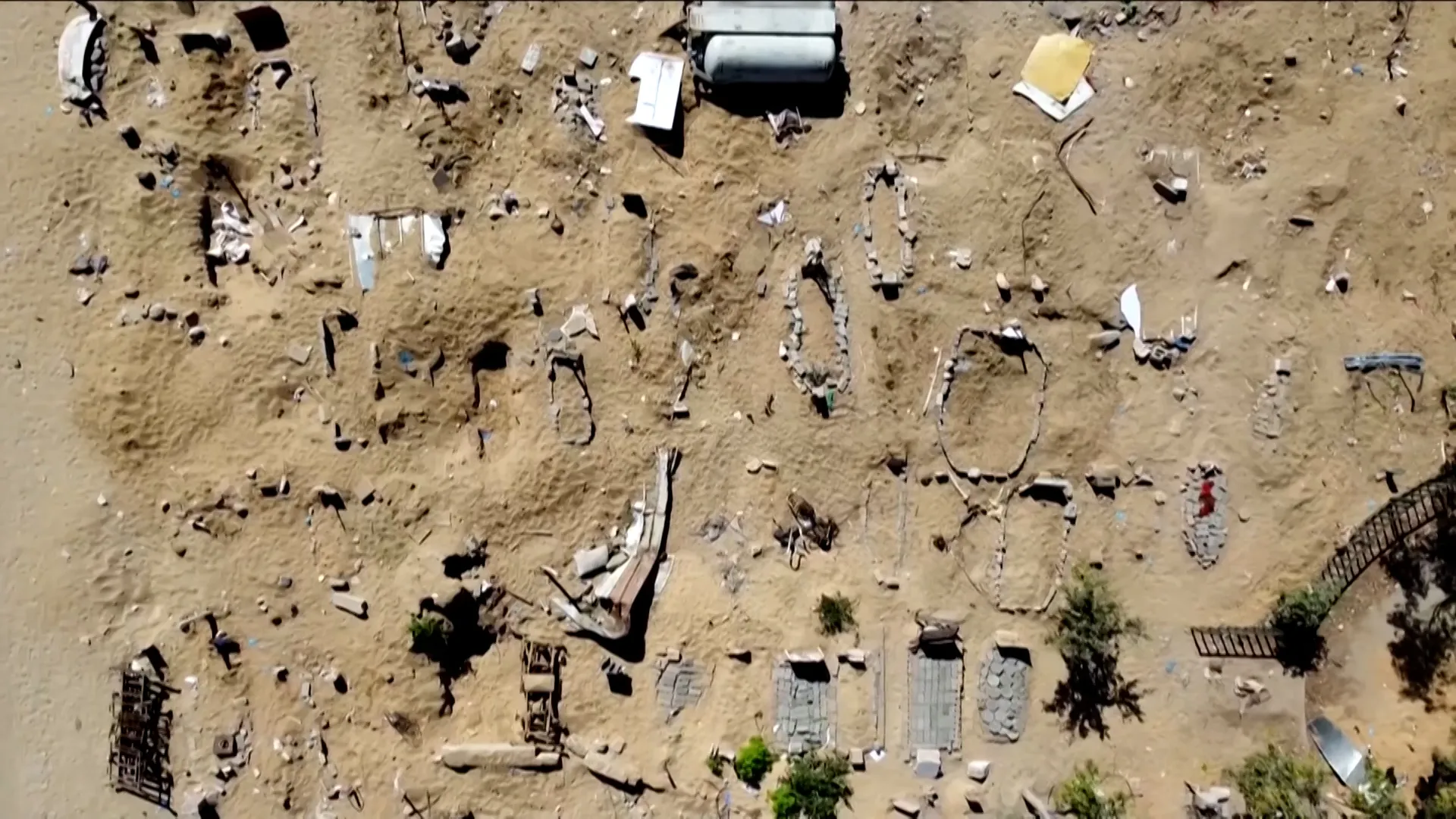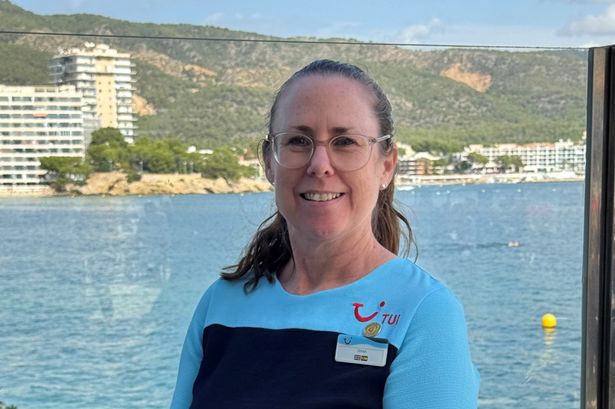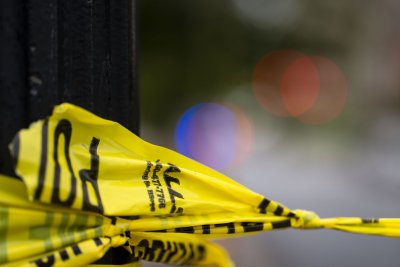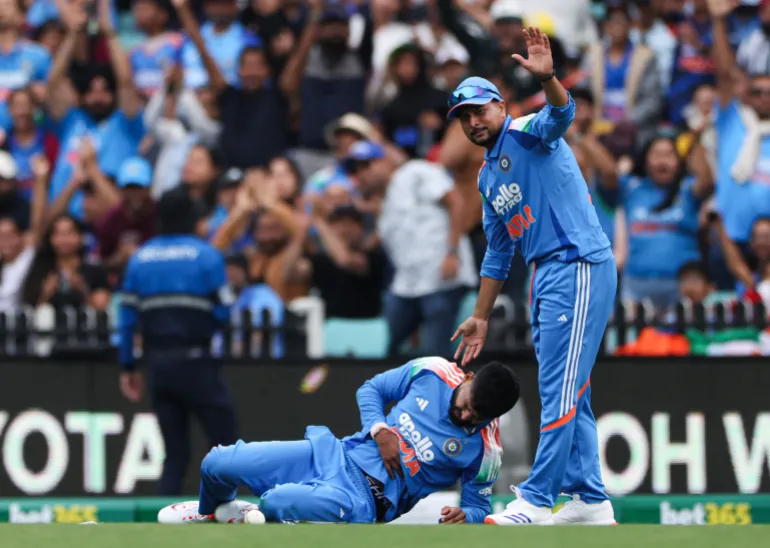Dodgers Dugout: Recapping Game 3 (thank you Freddie Freeman and Will Klein)
Hi and welcome to another edition of Dodgers Dugout. My name is Houston Mitchell. That was an incredible game.
Game 3 thoughts:
—Brad Paisley sang the U.S. national anthem. JP Saxe sang the Canadian national anthem. Apparently Bruce Springsteen and Paul Shaffer were unavailable.
—Hideo Nomo threw out the first pitch. If Lance Rautzhan was still alive, I’m sure it would have been him.
First inning
—Tyler Glasnow has to limit walks. Runners can steal on him and things could get out of hand in a hurry.
—I really could have lived without seeing highlights of George Springer in the 2017 World Series.
—Eight pitches to get out of the top of the first. That’s great.
—Leadoff double for Shohei Ohtani, which is a good sign. If he starts hitting again…..
—Now if only Freddie Freeman could get going.
Second inning
—Dodgers got a break there. A verrrrry slooooow strike call and Bo Bichette thought it was ball four and got picked off first. You have to wait for the call. Of course, we’d all be a lot more irate if it happened to the Dodgers.
—Two hits and a walk, and no runs scored.
—This is why you leave Teoscar Hernández alone. Yes, he looks terrible with four strikeouts in one game, but the next game he homers in his first at-bat.
Third inning
—Mookie Betts has become one of the best fielding shortstops in baseball. It’s so amazing to watch. To move to shortstop later in your career and excel is virtually unheard of.
—It may be time to give Alex Call a shot in the lineup in place of Andy Pages.
—Ohtani is back. He doesn’t get cheated on his home runs.
—Middle infielders need to learn to keep the tag on the runner in case his foot bounces off the bag. A few outs seem to be missed that way. Freeman’s foot bounced off the bag on his steal and he would have been out if Bichette maintained the tag.
—Dino Ebel gambles a lot at third base. There’s no way Freeman was going to score on a hard hit ball to Addison Barger, who has one of the best arms in the game. Keep him at third, and run up Max Scherzer‘s pitch count. This could be important later.
Fourth inning
—Tommy Edman‘s error was the first error of the series for either team.
—And it proved costly.
—You can’t give good teams extra outs, especially in the postseason.
—And then in the bottom half, the Dodgers go down quietly. This all stemmed from Freeman being thrown out at home. Ebel never should have sent him.
Fifth inning
—It seemed to be a struggle all night for Glasnow. He has erratic control, and that’s deadly against a team like Toronto. Now we go to the porous Dodger bullpen. Can they hold Toronto? If so, the Dodgers can come back. If not, this game could get ugly quickly.
—Anthony Banda is first man up. And he did fine to end the inning.
—I love the ad with Ken Griffey Jr. playing the organ. I mean, it no Limu Emu (and Doug) but it’s very good.
—Bringing in a left-hander to face Ohtani. Can he respond?
—He does. And that’s why he’s the best player in baseball.
—Freeman comes through too. Blue Jays manager John Schneider brought in Mason Fluharty to get Ohtani and Freeman, hoping he could also get Mookie Betts. Instead, he gets Betts, but can’t retire Ohtani or Freeman. Sometimes you can push all the right buttons and it doesn’t work.
—I wonder if Blue Jays fans are yelling at Schneider right now.
—I’m just glad Schneider was able to find work again after “Smallville” was canceled.
—Wait, I’m being told that’s a different John Schneider. No wonder Tom Welling isn’t one of his coaches.
Sixth inning
—Justin Wrobleski in to pitch now. Another left-hander. Why not stick with Banda? Playing three games in three days may have something to do with it.
—Maybe they can count on Wrobleski now too.
—Inning ends on another nice play by Betts.
—I also like the Bateman, not Batman, commercials. I’ve liked Jason Bateman ever since one of his first roles in the sitcom “It’s Your Move.”
—Great play by Vladimir Guerrero Jr. at first base throwing Teoscar out at third. But some bad baserunning. No need to take that chance with two out. That’s twice the Dodgers have run themselves out of an inning. What would have happened in those inning otherwise? We’ll never know.
Seventh inning
—George Springer hurt himself on a swing. Don’t like Springer, but I don’t want anyone to be injured. People cheering when he was taken off should be embarrassed.
—Hey, Blake Treinen came in and let the Blue Jays get ahead. Who would have guessed.
—I guess Dave Roberts is never going to give up on Treinen. I know they don’t have a lot of right-handed options, buy what about Will Klein. I mean, we KNOW what Treinen is going to do at this point. Maybe we can find another budding star. And if he can’t do it, you get him out quickly just like you did Treinen.
—This Ohtani guy is pretty good.
—My wife: “Why is he always up with the bases empty. Drop him down in the lineup.”
—Here’s a great thing about Ohtani. People told him “You can’t hit and pitch, you have to pick one.” And he refused to listen. Not to get over saccharin here, but you can apply that to your life, and it’s a great lesson for kids. If you have a dream, don’t let people tell you the many reason you can’t do it. You never know unless you try,
Most home runs in one postseason:
2020 Randy Arozarena, 10
2025 Shohei Ohtani, 8
2023 Adolis Garcia, 8
2020 Corey Seager, 8
2011 Nelson Cruz, 8
2004 Carlos Beltrán, 8
2002 Barry Bonds, 8
Eighth inning
—Jack Dreyer, last seen when Don Mattingly was the manager, now pitching.
—And just like that, Dreyer gives up two hits and is done. We’ll see him again in 10 years.
—It’s nice, and sad, to see the Dodgers wearing a No. 51 on their caps to show support for Alex Vesia.
—Roki Sasaki always looks scared. He’s not, he just has that look.
—A bobble by Max Muncy stops a possible double play. That could be important.
—Sasaki gets out of it. The Dodgers are now out of reliable relievers. They better score in the bottom of the eighth.
—That Amazon commercial where the teenage daughter walks in on her dad exercising in shorts that don’t fit right is a little creepy.
—Samuel L. Jackson is great in everything.
—Chris Bassitt pitching for the Blue Jays.
—The Dodgers go down meekly.
—The heart of the Blue Jays lineup bats in the ninth. Big inning. If the Dodgers get out of it, I think they will win.
Ninth inning
—Sasaki gets Guerrero, then pitches to Isiah Kiner-Falefa like he’s Babe Ruth and walks him.
—Great, great play by Tommy Edman, redeeming his earlier error.
—Great at-bat by Andy Pages with a poor ending.
—Intentionally walking Ohtani with the bases empty. Wow.
—And that’s why you hold the tag. And that’s why analytics hates stolen bases.
—We go to the tenth. The two best teams in baseball, battling it out in extra innings. This is fun, folks.
Tenth inning
—Emmet Sheehan in the game. He has been terrible this postseason. Can he told things around.
—More bad baserunning, this time by the Blue Jays. Davis Schneider had no chance to score on that, and Guerrero was on deck.
—Sheehan got hit hard. Does he come back out in the 11th if there is an 11th?
—Dodgers strand runners on first and second. We go to the 11th. And I can’t find my asthma inhaler.
Eleventh inning
—What a great game.
—Sheehan looked like the old Emmet Sheehan there.
—Braydon Fisher now pitching for the Blue Jays. The Dodgers traded Fisher to the Blue Jays on June 12, 2024 for the immortal Cavan Biggio, who is now with the Angels. Biggio played in 30 games for the Dodgers, hitting .192 and getting himself a World Series ring.
—Kiké Hernández has been very quiet this World Series.
—They walk Ohtani again with the bases loaded. This is against the spirit of the game. They should make a new rule: Walk a batter with the bases empty and he automatically gets placed on second.
—Ohtani has reached base every at bat. You have to wonder if this will be a problem tomorrow when he pitches.
—The Dodgers have wasted a lot of scoring opportunities.
—Where is my asthma inhaler?
Twelfth inning
—Sheehan is in there again. Clayton Kershaw is warming up. Are the baseball gods conspiring to get Kershaw into one more World Series game?
—The Dodgers walk the No. 9 hitter. You don’t see that often. Will they regret it? Giménez hit worse that Schneider during the season.
—And here comes Kershaw. Bases loaded, two out. Twelfth inning. No pressure at all.
—The baseball gods have set this up for Kershaw to get one more World Series win. Now the Dodgers need to score in the bottom half.
—Ellen Kershaw‘s reaction had more emotion than most two-hour movies.
—If Kershaw never pitches again, that was a great moment to go out on.
—Will Smith tried to win it for Kershaw with a couple of home run swings.
—Another left-hander comes in, Eric Lauer, who was a starter until Shane Bieber (the Game 4 starter) came off the IL.
—And the Dodgers go down quietly.
—Seriously, I think the dog took my asthma inhaler.
Thirteenth inning
—Edgardo Henriquez, who has not retired a batter this postseason and has an ERA of infinity, is now pitching.
—The Dodger Stadium crowd is very quiet and sounds tired. Must be thinking about that hour wait in the parking lot while trying to go home.
—Leadoff double is just what the Dodgers needed.
—And look at Miguel Rojas. Hasn’t played all series and lays down a perfect bunt.
—Now Alex Call, who rarely plays. Can he be the hero?
—Man on third, one out. You have to score here.
—And of course they are going to walk Ohtani.
—And they walk Betts intentionally too. Wow. Pitching to Freeman with the bases loaded.
—And the Dodgers fail to cash in. Freeman is not having a good series.
—I think maybe my grandson hid my inhaler.
Fourteenth inning
—Rojas and Call stay in the game. Henriquez back on the mound. Will Klein is the only reliever left.
—Henriquez has looked good, but how long can he pitch?
—That foul ball by Giménez hit both of his legs. Baseball players must have tons of bruises at the end of the season. And it’s amazing that catchers can even walk.
—Someone on the Dodgers just needs to hit a home run and end this.
—And Will Smith came close.
—You know what Fox should do? Go around before the game and find some normal, average people at the game. Ask them their name and where they are from. Then, instead of showing the celebrities, “Justin Bieber is here. Sean Hayes is here,” say “Henry Blake from Lancaster is here with his wife Lorraine.” “Sherman Potter is here from Carson with his wife Mildred.”
—And Muncy came close before walking.
—Dieter Ruehle‘s fingers must be cramping by now.
—Tommy Edman has not been Tommy Tanks so far this postseason.
—And we go to the fifteenth. I believe a UFO flew down and teleported my inhaler away.
Fifteenth inning
—Will Klein now pitching for the Dodgers, who are now out of relievers. The Blue Jays are out of position players.
—The terrible Dodgers bullpen has been incredible tonight. 10.1 innings, 10 hits, four walks, eight strikeouts, one run. Now I’ve probably jinxed them, so they better score now.
—If Call reaches first, would they walk Ohtani intentionally?
—We won’t find out. He grounded to second.
—And they walked Ohtani again. He has reached base all eight of his plate appearances.
—Betts and Freeman need to cash this in.
—They do not. We go to the 16th. The record for longest World Series game is 18 by the Dodgers and Red Sox in 2018.
—We go to the 16th. I’ve given up on finding my asthma inhaler. I’ll just go ahead and pass out.
Sixteenth inning
—A lot of people are going to call out sick to work tomorrow.
—This has reminded me why I don’t obsess over every Dodger win or loss during the season. I get paid to watch and write about it. Truly a blessed life.
—Klein looks like a guy who should be higher on the Dave Roberts trust tree.
—According to the Fox telecast, the Dodgers will bring in a position player after Klein pitches the next inning. That would be very sad to see.
—Sixteen innings, and Hyeseong Kim still can’t get in a game.
—Dodgers are going down very quietly every inning.
Seventeenth inning
—You can’t say enough about this performance by Klein. Three innings, one hit, four strikeouts.
—If it’s true the Dodgers are bringing in a position player to pitch the next inning, then they really need to score now.
—Yoshinobu Yamamoto has volunteered to pitch the next inning. Will they need him?
—Brendon Little now pitching for the Blue Jays. He is their last reliever.
—Call singles. Will they walk Ohtani?
—They basically walked him. Didn’t give him anything to hit. Pitched around him.
—Again, the Dodgers can’t cash in. Who pitches the 18th?
—I need to shave again.
Eighteenth inning
—Klein’s arm must be about to fall off. His fastball is a couple miles per hour slower this inning. If the Dodgers win it all, he certainly earned his World Series ring.
—Kiner-Falefa was out at first.
—You’d think with all the power on these teams, someone would have hit one out. Must be a marine layer at the game.
—Klein’s career high in pitches is 36. He made 72 tonight.
—Max Muncy bats third this inning. He won the last, and previously the only 18-inning game with a home run in the bottom half of … Game 3 … against Boston in 2018.
—But we don’t need to wait for him. Freeman comes up big once again. He has cemented his Hall of Fame status the last two seasons.
—What an incredible game. Incredible. With the best ending, unless you are a Toronto fan. Two great teams. It seemed every player had a moment. Two bad bullpens were dominant.
—They get to do it again in a few hours.
—For those keeping track of this (and I appreciate the emails from those who are), Hannah and Mason were not in their assigned spots for the game, but came home in the 14th inning, and then the Dodgers won.
—My prediction remains, Dodgers in five.
—More importantly, we wish Alex Vesia and his wife the best as they go through a trying time.
In case you missed it
Freddie Freeman’s walk-off homer lifts Dodgers to 18-inning win in World Series Game 3
What are your superstitions and lucky items to help the Dodgers win the World Series?
Mookie Betts on winning the 2025 Roberto Clemente Award
Shaikin: What are the motives behind Frank McCourt’s Dodger Stadium gondola plan?
Hernández: Don Mattingly reveals why his Dodgers managerial career ended a decade ago
Dodgers keep Andy Pages in Game 3 starting lineup; Shohei Ohtani laughs off Toronto chants
And finally
Freddie Freeman walks it off for the Dodgers, again. Watch and listen here.
Until next time…
Have a comment or something you’d like to see in a future Dodgers newsletter? Email me at [email protected]. To get this newsletter in your inbox, click here.
Video: Unidentified Palestinian bodies recovered from Gaza City mass grave | Gaza
Dozens of Palestinian bodies have been retrieved from mass graves near al-Shifa Hospital, buried almost a year ago after Israeli forces withdrew from the area. Hani Mahmoud explains how families and aid workers are struggling to identify the victims.
Published On 28 Oct 2025
U.S. Navy Air-Launched Version Of ‘Cheap’ Blackbeard Hypersonic Missile Hinted At
A contract the U.S. Navy recently awarded to defense startup Castelion may point to its pursuit of a new, lower-cost, air-launched hypersonic strike weapon. The service has something of a gap to fill now after halting plans for an air-launched, air-breathing hypersonic anti-ship cruise missile roughly a year ago, due to cost and industrial base factors. A version of Castelion’s Blackbeard hypersonic missile could also find its way onto Navy ships and submarines, as well as ground-based launchers.
Last Friday, Castelion announced that it had received contracts from the Navy, as well as the U.S. Army, for “integration” of Blackbeard onto unspecified “operational platforms.” TWZ has reached out to the Navy for more information. The Army has already made clear it is interested in employing Blackbeard in a ground-launched mode, as you can read more about here.

“Under these agreements, Castelion will work with both services to integrate the hypersonic Blackbeard weapon system onto operational platforms and demonstrate its capabilities in live-fire tests – advancing the Department of War’s effort to evaluate and accelerate new, cost-effective strike capabilities for conventional deterrence,” according to a company press release. “Blackbeard is Castelion’s first long-range, hypersonic strike weapon, designed for mass production and rapid fielding once integration and testing are complete. The system leverages vertically integrated propulsion and guidance subsystems to achieve performance at a fraction of the cost of legacy weapons – supporting the Department’s objective of building credible, non-nuclear deterrent capacity at scale.”
Many questions remain about the expected final design and capabilities of the Blackbeard missile, including whether or not it will feature some form of air-breathing propulsion. The full “weapon system” could also incorporate multiple designs. Castelion has already conducted numerous live-fire launches using different test articles.
The designs seen in testing to date “are representative of the low-cost internally developed test vehicles we use to enable rapid subsystem design iteration and to ground our performance models in real-world test data,” Castelion told TWZ back in June. “Castelion’s approach to development focuses on getting into hardware-in-the-loop and flight testing early in development to support learning cycles across design, production, and test. As such, flight vehicles shown on social media are not representative nor intended to be representative of our final weapon systems.”

As TWZ has noted in the past, the term “hypersonic missile” typically refers to weapons designed for sustained hypersonic speed across a relatively shallow and even maneuvering trajectory. This can include designs that use a ballistic missile-like booster to loft an unpowered glide vehicle to a desired velocity and altitude before releasing it toward its target, as well as air-breathing cruise missiles capable of traveling at hypersonic speeds. Hypersonic speed is generally defined as anything above Mach 5, which larger ballistic missiles do reach in the course of their flights.

The testing that Castelion has disclosed so far has also been centered on the employment of Blackbeard in the ground-launched mode, which is fully in line with what is known about the Army’s plans for the weapon. The Navy could have a similar eye toward surface (or sub-surface) launch modes from ships, submarines, or even launchers on the ground.
At the same time, there are indications that the Navy is pursuing Blackbeard, at least in part, as an air-launched weapon. In February 2024, Castelion received a contract from the Office of Naval Research (ONR), valued at just under $3 million, to “perform an initial trade study to identify cost, schedule, and performance estimates of producing an air-launched anti-surface weapon and shipping system not to exceed 212″ in length with an on-aircraft weight limit of 2,750 lbs. and an air-to-air weapon with not-to-exceed dimensions of 7″ diameter x 144″ long with production quantity of >200 no later than 2027 for both weapons.”
Whether or not the air-to-air weapon design mentioned here is part of the larger work Castelion is doing on Blackbeard, or a separate project, is unknown. The company has previously said that it was aiming to have a more finalized Blackbeard design by 2027.
This is not the first time that work on an air-launched variation of Blackbeard has come up, either. In its 2026 Fiscal Year budget request, the Army said that the ground-launched version of the weapon that it expects to receive will leverage an “existing air-launched, extended-range Blackbeard design,” but did not elaborate. TWZ has reached out to the Army for more information in the past.
As noted, the Navy has had a stated requirement for an air-launched hypersonic anti-surface warfare capability for years now. Starting in 2021, the service had been pursuing an air-breathing hypersonic cruise missile to meet that need through a program called Hypersonic Air-Launched Offensive Anti-Surface Warfare (HALO). Raytheon and Lockheed Martin had been working on competing designs.

The Navy had hoped to begin fielding HALO before the end of the decade. However, in late 2024, the service scrapped plans to move the program to the next phase of development.
“The Navy cancelled the solicitation for the Hypersonic Air-Launched Offensive Anti-Surface Warfare (HALO) Engineering and Manufacturing Development (EMD) effort in fall 2024 due to budgetary constraints that prevent fielding new capability within the planned delivery schedule,” Navy Capt. Ron Flanders, a service spokesperson, told TWZ in April of this year. “The decision was made after the Navy conducted a careful analysis, looking at cost trends and program performance across the munitions industrial base compared to the Navy’s priorities and existing fiscal commitments.”
“We are working closely with our resource sponsors to revalidate the requirements, with an emphasis on affordability,” Flanders added at that time. “The Navy is committed to its investment in Long Range Fires to meet National Defense objectives, with priority emphasis on fielding continued capability improvements to the AGM-158C Long Range Anti-Ship Missile (LRASM).”
Castelion’s focus on lower-cost and producibility for Blackbeard, coupled with the schedule it is targeting for development of the missile, all align with the Navy’s stated post-HALO plans. The service had previously described HALO as a critical capability, especially in the context of future high-end fighting, such as one in the Pacific against China.

The Navy could well be looking at multiple options to meet this ongoing requirement for a new, air-launched, high-speed, anti-ship weapon. The service is already fielding an air-launched version of the Standard Missile-6 (SM-6), called the AIM-174B, ostensibly in the anti-air role. However, in its surface-launched form, the SM-6 also has an anti-ship capability, and the AIM-174B could be used in that role, as well.

As mentioned, the Navy could still pursue other versions of Blackbeard beyond an air-launched type. Previously stated plans for HALO also included the eventual development of variants that could be fired from ships and submarines.
Other services could be interested in air-launched variations of Blackbeard, as well. The U.S. Air Force has also awarded Castelion contracts in the past in relation to long-range strike weapon concepts, and TWZ has previously reached out to that service for more information.
All of this is also heavily contingent on Castelion meeting its schedule, cost, and other goals for Blackbeard. The Army’s budget documents show it is pursuing Blackbeard aggressively, but through a phased approach that offers multiple off-ramps.
Castelion has certainly received a new vote of confidence on Blackbeard, regardless of launch modes, with the new integration contracts from the Navy and the Army.
Contact the author: [email protected]
What is the Beez in the Trap trend, and when were the Nicki Minaj and 4 Non Blondes’ songs released?
ANOTHER TikTok trend has taken off, this time featuring a combo of iconic tracks from different genres and eras.
Here’s everything you need to know about the Beez in the Trap trend, which is clocking up tens of millions of views and spawning hundreds of thousands of videos.

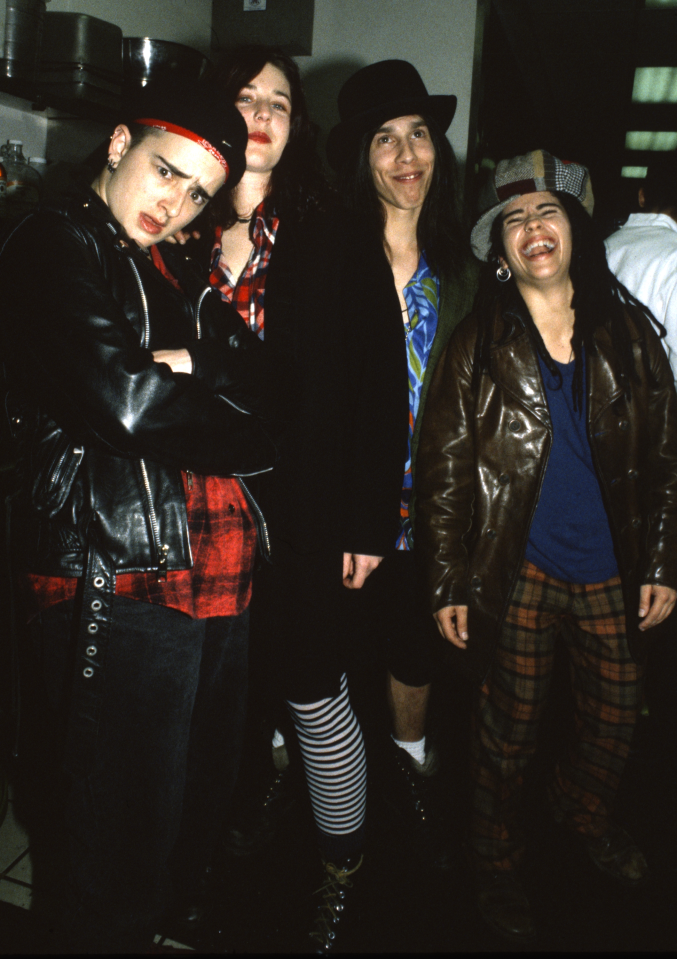
What is the Beez in the Trap trend?
The Beez in the Trap trend is a viral TikTok phenomenon combining two iconic tracks.
The mashup has produced a surge of videos, with participants lip-syncing lines from both songs in a duet or surprise reveal.
As of October 2025, it is one of the platform’s most popular viral sounds.
The remix at the heart of the trend was originally made by TikToker DJ Auxlord in August 2025, but didn’t explode online until a few months later.
read more on tiktok trends
What were the original songs?
The original songs fuelling this trend come from different genres and eras – Nicki Minaj’s 2012 hip hop single Beez in the Trap and 4 Non Blondes’ 1993 alternative rock hit What’s Up.
Beez in the Trap, featuring rapper 2 Chainz, was released on May 29, 2012 as a single from her second studio album Pink Friday: Roman Reloaded.
Minaj said the phrase “I beez in the trap” means she’s always making money, as she explained on the Graham Norton Show when the song came out.
During the interview, Minaj clarified that “beez” is slang for “I am always” and “the trap” refers to any place where money is made.
The other single, 4 Non Blondes’ What’s Up, was released on June 11, 1993 and went on to become one of the decade’s definitive rock anthems.
Written and sung by Linda Perry, the song’s rallying chorus of “what’s going on?” became ingrained in pop culture.
The mashup has brought both songs new attention on social media.
The clips usually begin with someone lip-syncing the opening line from What’s Up over the beat of Minaj’s track.
The focus then swaps to another participant, who delivers Minaj’s razor-sharp hook.
As of November 28, 2025, the trend has seen over 600,000 TikTok videos created.
It has been embraced by both of the original artists, with 4 Non Blondes’ Linda Perry telling Rolling Stone it is “ridiculous in all the best ways”.
What celebrities have been doing the trend?
Education advocate and youngest-ever Nobel Peace Prize laureate Malala Yousafzai joined Jimmy Fallon on The Tonight Show for a rendition, which has been viewed over 73million as of November 28, 2025.
Sabrina Carpenter and Marcello Hernandez did a version that has so far been viewed over 18million times.
Other major celebs taking part in the trend include rapper Ice Spice with PinkPanthress and Quen Blackwell, while Jennifer Lopez and former 4 Non Blondes singer Linda Perry – who sang the vocal on the original – have joined in on the fun.
Kylie Jenner and Khloe Kardashian have also had a go, as well as Gordon Ramsay, his wife Tana and daughter Tilly.
I left the UK for Majorca 26 years ago

ONE Brit has shared her top spots in Majorca, after she was due to stay there for just six months… yet is still there 26 years later.
Diana Winskill originally left the UK for Spain back in 1999, for what was supposed to be a short stint as a TUI rep.
Yet, fast forward 26 years, she is still in Majorca.
She said: “I came here when I was 23 for what was supposed to be six months.
“I met my English born husband Chris here, we had two daughters, Imogen and Amelia and I’ve now lived in Majorca longer than I ever lived in the UK.”
She has even seen in that time what Brits love to do when in Majorca, including the all-inclusive holiday options.
Read more on travel inspo
She added: “And then there’s bingo.
“Without fail, we have our loyal customers who love their bingo every evening.
“That’s never changed in my 26 years.”
When it comes to her favourite things to do in Majorca, Diana recommends heading to Sant Elm, which is a quiet coastal village in the south west of the island.
Diana said: “Sant Elm has a very relaxed vibe and beautiful turquoise waters.
“You can relax on the small sandy beach, enjoy lunch and sangria in one of the small restaurants or hop on a boat to Dragonera, a protected uninhabited island where you can find unique wildlife and great hiking routes.”
Another top spot for the TUI rep is Palma city.
She said: “You can’t miss the spectacular cathedral, but many people don’t know about the 11th century Arab baths just around the corner.
“It’s well worth the small entrance fee to experience this little piece of history and interesting architectural elements.”
She added that if you happen to visit Palma on the last Saturday of every month, then you can see the changing of the guard at the Almudaina Palace – which is next to the cathedral.
“This is a fantastic sight where soldiers from the Light infantry regiment of Palma recreate the historical guard shift wearing historical 18th century uniforms,” Diana revealed.
The ceremony includes muskets, sabres and drums and it takes place at midday and 7:30pm in July and August.
For another hidden spot, head to Inca, which is known for having the biggest weekly market on the island.
Or you could head to one of the most varied, vibrant and historical markets in Majorca – Sineu market – which takes place each Wednesday.
Diana shared: “Dating back almost 700 years you’ll find amazing local fruits and vegetables, farm animals, leather products and much more.”
Finally, Diana recommends going for a ride on the historic wooden train that started operating between Palma and the mountain town of Sóller in 1912.
She said: “Beautifully preserved, this charming train journey takes you through stunning countryside and up into the UNESCO World Heritage Site of the Tramuntana mountains.
“From there you can take the vintage tram to the port area, and then a boat to the breathtaking Sa Calobra bay.
“It is a very spectacular day of sightseeing in the most untouched part of the island.”
Diana works at the adults-only Hotel Globales Santa Lucia, which is located between two sprawling beaches.
The resort is then just a five-minute walk into town and it has an indoor and an outdoor pool, a buffet restaurant and two bars.
She has also noticed how Brits want to do more excursions, such as seeing the markets in Majorca and experiencing the local culture.
She said: “TUI have so many to choose from with local guides who know the island back to front.”
And on the TUI app, travellers can see all their transfer times and can book experiences on their phones.
She added: “Even in winter, the average temperature only drops to 13 degrees, and you still get the most beautiful sunshine even in the colder months.
“My colleagues have become my family, and honestly, working around people on holiday is infectious because everyone’s so positive.”
In other Spanish news, there will be vintage train to connect two cities next year – with a seaside stop along the way.
Plus, Spain’s ‘best coastal town’ set to ban smoking, pets and loud music on its beaches.
The ‘Disney-alternative’ theme park Brits rarely visit is getting a £218m makeover… with British-themed land and pub
A THEME park in France, often dubbed as a ‘Disney-alternative’ is set to undergo a huge makeover.
At a cost of £218million, it will get new thrilling attractions, restaurants, and a four-star hotel, and it’s all in the works to open by 2030.
Parc Astérix is the second largest theme park in France and yet it’s barely visited by Brits.
Instead, visitors from the UK tend to head to Disneyland Paris, but there Parc Astérix is worth the visit, and is about to get bigger.
The theme park is based on a comic book series that has over 50 attractions across six themed worlds like the Roman Empire, Greece, and the Vikings.
And there’s a new land being added to the portfolio which will make Brits feel like they’re right at home.
In 2028, Parc Astérix is opening a new British-themed land called Londinium.
It will feature a major immersive roller coaster, an interactive family dark ride, a vertical playground, a pub and shops.
Some concept art has even revealed it to have a Helter Skelter and a queue themed to the UK’s own Camden Market.
Another themed area which will change is the Egypt area, its Oxygénarium attraction, which will become The Descent of the Nile.
The park will open its fourth hotel called The Odyssée Hotel, a new 300-room hotel that is set to open in 2027.
The addition will mean that the total number of hotels at Parc Astérix will reach 750.
The park’s Les Chaises Volantes attraction will become the Flight of Ibis, and the Le Cirque Restaurant will be redesigned as Le Comptoir d’Epidemaïs.
In 2027, Parc Astérix will open a renovated Greek zone with a two new family attractions, a playground and a restaurant.
The park also revealed that the new development will create 20 per cent more capacity, and two thirds of it will be indoors so it won’t have to rely on good weather.
The theme park is 21 miles north of Paris, and in fact is just an hour’s drive away from Disneyland Paris.
Parc Astérix is significantly smaller than Disneyland Paris. Disneyland Paris is approximately 140 acres, while Parc Astérix is about 83 acres.
In terms of numbers, Parc Astérix welcomed a record 2.9million visitors in 2024, whereas Disneyland Paris averages 12million – so the French theme park will be much quieter.
It’s award-winning too, earlier this year, it’s attraction Cétautomatix won the ‘Top European New Attraction’ prize at the Parksmania Awards 2025.
Cétautomatix is Europe’s first spinning family roller coaster.
Tickets to Parc Astérix cost €49 (£42.89) per person.
Plus, here’s more on the massive European theme park less than three hours from the UK named the best in the world – beating Disney and Universal.
And here are the top six UK theme parks you can easily reach by train – and how to find the cheapest family fares.
One Sun Writer visited the theme park with her family, and here’s what she thought…
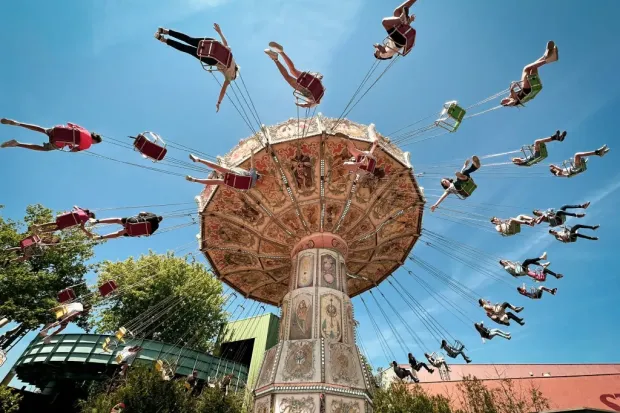
When EuroDisney — now Disneyland — arrived to take on France’s beloved Asterix theme park back in 1992, they had a huge battle on their hands. And, in all honesty, I couldn’t see how the French would win.
But unlike in many other countries, Parc Asterix might just have pipped Mickey Mouse to the post in France.
Disney certainly has the monopoly on world-renowned characters and a blow-out budget to create that real wow factor, all of which seems impossible to compete with — yet somehow Parc Asterix does.
he tickets are cheaper, the food is better, the shows are spectacular and the rides are a total revelation.
Add in a sprawling protected countryside backdrop just 30km outside Paris, with three separate hotels within the grounds at very reasonable prices, and you’ve got yourself a winner.
It’s pure escapism, based all around the cherished world of Asterix — the man who, in famous French comics, protected France from the Romans.
And what better way to embrace your inner Gaul than by screaming your head off on a super-fast ride?
At the last count, there were nine hardcore rides, as well as all the more child-friendly ones.
And with a guarantee that they will launch something new pretty much every year, you can return in the knowledge you will never be bored.
Our favourite rollercoaster here, reaching speeds of 110km per hour, is the fastest in France and apparently holds the record for the most “air time” — the amount of time your bum leaves the seat (a whopping 23 times apparently!).
Santa Monica eyes bold turnaround plan amid financial troubles
It’s been a rough few years for Santa Monica.
Businesses have abandoned its once-thriving downtown. Its retail and office vacancy rates are among the highest in Los Angeles County. The crowds that previously packed the area surrounding the city’s famous pier have dwindled.
Homelessness has risen. City officials acknowledge crime incidents had become more visible and volatile.
The breadth and depth of the issues became apparent just last month when the city was forced to declare itself in fiscal distress after paying $229 million in settlements related to alleged sexual abuse by Eric Uller, a former city dispatcher.
Now, Santa Monica is trying to plot a new path forward. A significant first step could come Tuesday.
That’s when the City Council is set to consider a plan to reverse its fortunes.
A shuttered business on Broadway in Santa Monica.
(David Butow/For The Times)
The plan includes significantly increasing police patrols and enforcing misdemeanor ordinances, investing in infrastructure and new community events, and taking a more business-friendly brush to permits and fees. Officials also plan to be more aggressive in making sure property owners maintain unused properties.
The blueprint tackles many “quality of life” issues that critics say have contributed to lower foot traffic in the city’s tourist districts since the COVID-19 pandemic.
It’s far from clear the tactics will work. But given the city’s current trajectory, officials say bold action is necessary.
“We’re trying to usher in a rebirth — a renaissance of the city — by investing in ourselves,” Councilmember Dan Hall said.
Hall, 38, is part of a relatively youthful City Council majority that swept into office in recent years as voters opted for new leadership and a fresh approach. Five of the seven council members are millennials, and six members first joined the council in either 2022 or 2024.
Also new on the scene is City Manager Oliver Chi, who five months ago was hired away from the same position in Irvine.
“The city is in a period of distress, for sure,” said Chi, 45. “We’re not in a moment where the city is broke. The city still has resources. … But right now, if we do nothing, the city’s general fund operating budget is projected to run a structural deficit of nearly $30 million a year, and that’s because we’ve seen big drops” in revenues, such as from hotel taxes, sales tax and parking.
“But part of that is the private sector hasn’t been investing in the city. And we haven’t had people traveling to the city,” Chi said.
Santa Monica is far from the only city — in California or nationwide — to face the pain of a downtown in decline. Brick-and-mortar retailers have long bled business to online offerings, and the pandemic upended the cadence of daily life that was the lifeblood of commercial districts, with many people continuing to work from home at least part of the week.
Birds fly over and people walk on the Santa Monica Pier.
(Allen J. Schaben/Los Angeles Times)
But the hope is through concerted, planned investment that Santa Monica can shine once again and modernize to be competitive in the postpandemic era.
The City Council had already decided to set aside $60 million from its cash reserves to spend over the next four or five years to cover any operating deficits. But with Tuesday’s vote, Santa Monica would instead use those dollars as an investment in hopes of getting the city back on track.
“Those things really are issues related to public safety, disorder in town, the disrepair that we’ve seen in our infrastructure,” Chi said. “All of those things are preventing, I think, confidence in the local economy.”
In downtown, the city’s plan would include doubling the number of police officers assigned to a specialized unit to at least eight to 10 a day, deploying an additional five patrol officers daily, creating a new police substation, adding two workers daily to address homelessness issues, and hiring eight public safety employees to provide a more constant presence across the city’s main commercial district, parks and parking garages.
Staff in the city attorney’s office would also be augmented to boost the ability to prosecute misdemeanor cases.
An unhoused man naps on a bench in Palisades Park.
(David Butow / For The Times)
Also on the agenda: moving the city’s homeless shelter out of downtown; making a one-time $3.5-million investment to address fraying sidewalks and streets and freshen up trees and trash cans; funding monthly events at the Third Street Promenade to attract crowds; creating a large-scale “Santa Monica Music Festival” next year; upgrading restrooms near the pier and Muscle Beach; and increasing operating days for libraries.
Another proposal would require the owners of vacant properties to register with the city, in hopes of addressing lots that remain in disrepair.
The city is also looking to be more business friendly. It’s seeking to upgrade the current permit process, utilizing artificial intelligence to get nearly instantaneous permit reviews for single-family homes and accessory dwelling units, as well as reduce permit fees for restaurants with outdoor dining.
The plan also outlines strategies to boost revenue. Santa Monica is poised to end its contract with a private ambulance operator, McCormick Ambulance, in February and move those operations in house.
“It’s going to cost roughly $2.8 million a year to stand that operation up. But the reality is, once we start running it, it’ll generate about $7 million a year in new ongoing revenues,” Chi said.
“That’s part of what we’re thinking through: How do we invest now in order to grow our revenue base moving ahead?” he said.
Parking rates are also going up, which city officials estimate should generate $8 million to $9 million in additional annual revenue — though officials say they still charge a lower rate than those of nearby cities.
The city also plans more traffic safety enforcement and will cut the current 90 minutes of free parking in downtown parking structures to 30 minutes.
There’s also been talk of a new city parcel tax, though no decision has yet been made to pursue that. A parcel tax would need voter approval.
Another priority is building back the city’s cash reserves, which have dwindled over the years, largely on account of legal payments. Eight years ago, Santa Monica had $436 million in cash reserves; today, there’s only $158 million in nonrestricted reserves.
The planned $60 million in spending would further reduce the city’s unobligated cash down to $98 million.
Santa Monica’s annual general fund operating budget is nearly $800 million a year.
Beachgoers enjoying the scene near the Santa Monica Pier.
(David Butow/For The Times)
The city is also looking to redevelop some of its underutilized properties, including a 2.57-acre parcel bounded by Arizona Avenue and 4th and 5th streets, which includes branches of Bank of America and Chase bank, the leases of which are expected to expire in a few years. Also being eyed are a 1.09-acre kiss-and-ride lot southeast of the Santa Monica light rail station; the city’s seismically vulnerable Parking Structure 1 on 4th Street, which sits on 0.75 of an acre; and the old Fire Station No. 1, which sits on 0.34 of an acre and is being used for storage.
No firm plans are in place just yet. The parcels could be sold, leased long term or redeveloped as part of a joint venture. One likely possibility is that the developments would include new housing.
“When you look at any revitalization effort of any vibrant downtown core that’s eroded, there’s always been an element of repopulating the area with people,” Chi said. A smart redevelopment plan for those properties will not only “hopefully help bring back vibrancy to the downtown, but also help replenish the city’s cash reserves.”
The seeds of downtown Santa Monica’s decline actually started before the pandemic. But COVID hit the city hard, and commercial vacancies rose significantly, Councilmember Caroline Torosis, 39, said.
Santa Monica also sustained damage in 2020 from rioters who swarmed the downtown area in what appeared to be an organized attack amid a protest meant to decry the death of George Floyd in Minneapolis.
Tourists never came back in the numbers they had before the pandemic.
Torosis said the new council majority was elected on a promise to boost economic activity in the city.
“We need to absolutely ensure that people feel safe, welcome, invited and included in our city,” said Torosis, who serves as mayor pro tem.
Hall called the plan a bold bet.
“What we’re trying to do here is move us away from a scarcity mind-set, where we’re nickel-and-diming businesses trying to stay open, restaurants trying to open a parklet, residents trying to build an ADU,” Hall said.
The council’s relative youth, he said, is a plus for a city trying to write a bright new chapter.
“I think that that’s something that millennials are finding themselves needing to do as we take ownership of society, and we see a world where past generations have been afraid to make mistakes or afraid to make decisions,” he said.
Aston Martin avoid penalty for ‘very minor’ F1 procedural breach
Aston Martin committed a procedural breach of Formula 1’s cost-cap regulations through a late submission of their documentation for the 2024 season.
The offence happened because the person at the independent company used by Aston Martin who was required to sign the submission was unwell at the time of the deadline on 31 March 2025.
The accounts were finished at the time, and the team did not exceed the cost cap.
Aston Martin have received no punishment from the FIA, but have been required to meet the costs incurred by F1’s governing body in preparing the team’s “accepted breach agreement”.
An FIA statement read: “Although Aston Martin Racing has been found to be in procedural breach, it has not exceeded the cost-cap level, and the procedural breach was of a very minor nature, originated by unpredictable circumstances outside the control of the F1 team.”
It added: “Aston Martin did not gain or seek to gain any advantage from the commission of the procedural breach at issue.”
Aston Martin submitted its draft documentation before the deadline, just not the finalised signed papers.
All nine other teams were found to be in compliance with the cost cap, as were all five engine manufacturers.
The 2024 cost-cap regulations defined a maximum spend per team of $135m (£106.375m).
A number of costs are excluded from the cap, including the salaries of drivers and the three top executives, and marketing spending.
‘I’ve found the best Disneyland alternative – tickets are £11 and food is incredible’
Under a two-hour flight from the UK is a ‘magical’ and ‘beautiful’ theme park, boasting 30 rides and attractions that offers a great alternative to Disneyland – and it’s much cheaper
Disneyland has long been dubbed ‘The Happiest Place on Earth’, but with that comes a hefty price tag, particularly if you’re taking the whole family. Thankfully, there’s a cheaper alternative for a fraction of the price, and it’s even been said to have been inspired by Walt Disney itself.
Less than a two-hour flight from the UK is Tivoli Gardens in Copenhagen, Denmark, known for its “cosy, wholesome and magical atmosphere.” It claims to be the second-oldest amusement park in the world, having opened in 1843, and boasts around 30 fun-packed rides and attractions for the whole family to enjoy.
Located in the heart of the city and set within the stunning backdrop of the Danish capital, it has been labelled “the most beautiful park” by one avid traveller and content creator called Emily. And one of the most appealing qualities about this theme park is that tickets start from as little as £11.10 per person.
READ MORE: Last flight cancelled to UK’s most remote airport leaving hidden gem town strandedREAD MORE: ‘I stayed in UK’s most haunted hotel – there was unexplainable noise in dead of night’
Sharing details of the beloved and overlooked Disneyland alternative, Emily posted a TikTok video on her page, @upfoldadventures, during a family day out. At the start of the video, she told her 10.9K followers, “If Disneyland Paris is out of your budget this year, I have the next best thing, and no, it’s not Efteling.
“If you love Disney but you hate the crowds and you want the magic but at half the price, well this park has those Disney magical storybook vibes but without the chaos and when it gets dark and all the lights come on, you will understand why this is called ‘Europe’s hidden Disney.'”
She added: “It is one of the world’s oldest theme parks and it is truly magical – it is honestly like stepping foot into a storybook.
“The rides are classic and stunning, the park is spotless, there’s live music, there’s shows and the food is phenomenal – don’t just think this is gonna be theme park junk, no, it is genuinely some of the best food I’ve ever eaten in my life.”
One of the main attractions at Tivoli Gardens is the giant Ferris Wheel that was built in 1943. It also offers views 63m above the ground on the Golden Tower, and a thrilling ride on its wooden Roller Coaster, which was erected all the way back in 1914.
In addition, visitors can whiz around on their bumper cars and carousel rides, or admire the picturesque surroundings in the Hanging Gardens. And that’s not all, as the theme park is also packed with shops, stages, theatre spaces and a food hall to keep the family happy.
While the savvy saving mum is a huge fan of Disneyland Paris, she was left delighted after a day out at Tivoli Gardens. In the video she added: “So if you love the Disney vibe, well then you’re gonna fall in love with it, because it is such a cosy, wholesome, magical atmosphere at a fraction of the cost of Disneyland Paris – and before Disney even existed, this park was creating all the magic.”
Standard weekday tickets for Tivoli Gardens start from just £11.10 for children aged 3-7, while a standard adult ticket costs just £22.21. A weekday ticket and ride pass, offering full access to all the attractions, will set you back £25.01 for children aged 3-7 and £50.14 for an adult ticket.
Children under 3 are free at Tivoli Gardens. Prices can vary, so it’s best to check their website for more details.
House oversight panel recommends DOJ probe Biden’s autopen use

Oct. 28 (UPI) — The House Oversight Committee on Tuesday asked the Justice Department to investigate former President Joe Biden‘s use of the autopen to sign executive orders and pardons.
The request came after the committee released a report on its investigation into Biden’s use of the autopen and whether it indicated an administration coverup of an alleged cognitive decline.
In a letter to Attorney General Pam Bondi, Rep. James Comer, R-Ky., chairman of the committee, accused Biden’s aides of coordinating “a cover-up of the president’s diminishing faculties.”
Over the summer, the oversight committee interviewed more than a dozen former aides and advisers to Biden. Among those who appeared before the committee were former chiefs of staff Ron Klein and Jeff Zients, and Biden’s former physician, Dr. Kevin O’Connor, who invoked the Fifth Amendment.
In addition to the letter to Bondi, Comer sent a letter to Andrea Anderson, chairwoman of the board of medicine at the District of Columbia Health calling on the board to investigate whether O’Connor was “derelict in his duty as a physician by, including but not limited to, issuing misleading medical reports, misrepresenting treatments, failing to conform to standards of practice, or other acts in violation of District of Columbia law regulating licensed physicians.”
The committee recommended that O’Connor’s medical license be revoked.
President Donald Trump has taken particular issue with Biden’s use of the autopen during his presidency, though he, himself, has used it. In a Presidential Walk of Fame exhibit installed at the White House in September, photos of each president were displayed outside the West Wing, except Biden’s. Instead, a photo of an autopen was put in Biden’s place.
There’s been a long history of presidents using an autopen to sign the many documents that come across their desks each day, beginning with the third president of the United States, Thomas Jefferson. According to the Shapell Manuscript Foundation, which collects historical documents, Presidents Gerald Ford, Lyndon B. Johnson, John F. Kennedy and Barack Obama used the device, some to sign the many requests for autographs and letters, others to sign important documents and orders.
In 2005, then-President George W. Bush asked the Justice Department’s Office of Legal Counsel whether it was constitutional for him to sign official documents using the autopen. The office concluded that “the president need not personally perform the physical act of affixing his signature to a bill he approves and decides to sign in order for the bill to become law.”
Trump said he has used the autopen but not for important documents. In June, he ordered an investigation into Biden’s cognitive state.
Biden has denied Trump’s claims about his mental faculties and autopen use.
“I made the decisions during my presidency,” Biden said in a statement.
“I made the decisions about the pardons, executive orders, legislation and proclamations.
“Any suggestion that I didn’t is ridiculous and false,” he added.
Lebanon’s Army Runs Out of Explosives as It Races to Disarm Hezbollah
Lebanon’s military is urgently working to meet a year-end deadline to disarm Hezbollah in southern Lebanon under a ceasefire deal with Israel. The operation marks a dramatic shift in Lebanon’s internal power dynamics, as the army takes on a role that would have been unthinkable during Hezbollah’s peak influence.
Two sources told Reuters that the army has blown up so many Hezbollah weapons caches that it has run out of explosives, forcing troops to seal off sites instead of destroying them until new U.S. supplies arrive.
Why It Matters
This campaign could redefine Lebanon’s sovereignty and reshape the balance between state and militia power. Hezbollah’s disarmament is a key demand from Washington and Israel, and its success could bring stability or trigger fresh unrest.
However, moving beyond the south risks sectarian tensions and could fracture the army, reviving memories of Lebanon’s civil war.
Lebanese Army: Leading disarmament under U.S. and international pressure, but facing shortages of explosives and political risks.
Hezbollah: Weakened by Israel’s war last year but still influential, especially in the north and Bekaa Valley, where disarmament remains uncertain.
United States: Providing millions in aid and demolition equipment to “degrade Hezbollah.”
Israel: Supplying intelligence through the truce mechanism but complicating operations with cross-border fire incidents.
UNIFIL: Supporting inspection and clearance operations in southern Lebanon.
Current Progress
Nine arms caches and dozens of tunnels have been uncovered in the south.
The army expects to complete southern operations by December.
Explosives depleted by June, with six soldiers killed during dismantling efforts.
$14 million in new U.S. demolition aid is expected, though delivery may take months.
Challenges Ahead
Hezbollah has agreed to ceasefire terms in the south but refuses to disarm elsewhere without a political deal.
Lebanese officials fear civil strife if the army expands disarmament north without consensus.
Israeli air strikes and occupation of five border hilltops threaten to delay progress.
What’s Next
The U.S. and allies are pressing Beirut to meet the year-end target and expand efforts beyond the south in 2026. But Hezbollah’s warning against confronting the Shi’ite community, and ongoing Israeli pressure, mean Lebanon’s army must walk a political and military tightrope.
As one Lebanese official put it: “The army if betting on time.”
With information from Reuters.
I’ve been a TUI rep for 26 years – there’s one thing Brits still do without fail
Diana Winskill, from Somerset, has lived in Majorca for the last 26 years, having moved to the Spanish island with her husband and kids to work as a TUI holiday rep
When Diana Winskill from Somerset left the UK for a six-month stint in Majorca as a TUI rep in 1999, she never imagined she’d still be welcoming British holidaymakers 26 years later—and still loving every minute.
While a lot has changed in the country and the world over the past quarter of a century, holidaymakers’ patterns are pleasingly regular.
“Brits still absolutely love their all-inclusive holidays. Knowing everything’s included means they can really indulge and not worry about extra costs. And then there’s bingo. Without fail, we have our loyal customers who love their bingo every evening. That’s never changed in my 26 years.”
For the past seven years, Diana has been a friendly face at one of the island’s most popular TUI hotels, the Globales Santa Lucia, welcoming and farewelling hundreds of British travellers each day.
READ MORE: Last flight cancelled to UK’s most remote airport leaving hidden gem town strandedREAD MORE: City ‘rivals Amsterdam’ with canals and nightlife and is ‘must visit’ in 2026
“I came here when I was 23 for what was supposed to be six months. I met my English-born husband Chris here, we had two daughters, Imogen and Amelia, and I’ve now lived in Majorca longer than I ever lived in the UK,” said Diana.
However, Diana has noticed some major shifts. British holidaymakers are increasingly seeking experiential travel, wanting to immerse themselves in local culture rather than just lounging by the pool.
“Excursions to see the markets in Majorca are getting much more popular. People want to get out and experience the local culture they’re in, and TUI have so many to choose from with local guides who know the island back to front. I’ve also noticed a rise in friendship groups travelling together, moving away from the traditional family or couple getaways”.
However, the biggest transformation has been technology.
“The TUI app has revolutionised everything. Customers now get all their transfer times and can book experiences directly on their phones. When I first started, we wrote everything by hand and phoned through excursion bookings.”
Yet despite the digital revolution, Diana insists that face-to-face contact remains crucial.
“Welcome meetings are still incredibly popular. In a world where everything’s going digital, people still love asking questions and meeting in person. Sometimes you just cannot replace human contact. And so we focus on ensuring we have the knowledge and know-how of the destination to help ensure our guests have the most memorable holidays.”
The adults- only Hotel Globales Santa Lucia is located between the beaches of Son Matias and Palma Nova, meaning there is sea views from each room and it’s just a five minute walk into town. It features an indoor and outdoor pool, and a sociable buffet restaurant and two bars.
“One customer told me she’d been back four times this year just to see me because I make her holiday so special. That’s what makes this job incredible. A lot of people think we’re just salespeople with a smile, but you have to be so well-rounded. We support people when things go wrong, but we’re also there for the magical moments. Holidays mean so much to people”.
Working from a beautiful beachfront hotel with year-round sunshine certainly has its perks.
“Even in winter, the average temperature only drops to 13 degrees, and you still get the most beautiful sunshine even in the colder months. My colleagues have become my family, and honestly, working around people on holiday is infectious because everyone’s so positive.”
‘Dead and Alive’ review: Zadie Smith collection revisits controversy
Book Review
Dead and Alive: Essays
By Zadie Smith
Penguin Press: 352 pages, $30
If you buy books linked on our site, The Times may earn a commission from Bookshop.org, whose fees support independent bookstores.
Last year the prolific and gifted Zadie Smith stumbled into controversy with the publication of “Shibboleth” in the New Yorker. She purportedly approached the white-hot Gaza demonstrations with the nuance and complexity they deserved and yet derided pro-Palestinian students at Columbia University as “cynical and unworthy,” stirring up a hornets’ nest among her young fans, who expressed their anger on various internet platforms. The controversy gained traction because of Smith’s record of championing the marginalized, citing theorists like Frantz Fanon while targeting empires and the omnipresent patriarchy. That she singled out one group of activists, many Jewish, at the very moment Arab toddlers were being blown apart by U.S.-funded bombs raised doubts about her touted values. Her conclusion was startling, her tone defiant: “Put me wherever you want: misguided socialist, toothless humanist, naïve novelist, useful idiot, apologist, denier, ally, contrarian, collaborator, traitor, inexcusable coward.” The lady doth protest too much?
“Shibboleth” appears in “Dead and Alive,” Smith’s collection of previously published essays, in which she assumes most if not all those roles she attributes to herself. Fanon is here as well, amid an array of artists and authors such as Joan Didion, Toni Morrison, and Philip Roth. Smith is arguing for the necessity of vigorous criticism and often makes her case. The book’s finest pieces wrangle, in elegant prose, with humanity’s contradictions; the weaker ones indulge in name-dropping, footnotes and op-ed invective.

Zadie Smith
(Ben Bailey-Smith)
“The Muse at Her Easel,” in the opening section, probes the relationship between English painter Lucian Freud and his model, Celia Paul, also a painter, via a review of her memoir. (Paul is the mother of one of 12 children he fathered outside of marriage.) Smith’s sly trick here is a bit of Freud-play: Lucian seen through the prism of his grandfather Sigmund, the family romance on steroids. Celia revolves around the artist here much as she did when he was alive, vulnerable and reflective, a moon to his sun. It’s both a restrained and overwrought essay, a cryptic tale of sexual politics, like her fellow Brit Rachel Cusk’s novel, “Second Place,” but one that urges us to think hard about abuses in the service of “museography.”
Smith brings an empathic eye to other artists, from the allegorical Toyin Ojih Odutola to the subversive Kara Walker. And she shines a bright light on numerous writers who have inspired her, particularly in remembrances of Didion (whose influence we sense throughout “Dead and Alive”) and the great Hilary Mantel. Her pieces on two books, “Black England” and “Black Manhattan,” excavate hidden histories of Black resistance and the painful compromises brokered to move forward. Her tone in “Fascinated to Presume: In Defense of Fiction” is elegiac, as though smartphones have killed off the craft; yet it’s also a manifesto of sorts, and a declaration of her own aesthetics. “Belief in a novel is, for me, a by-product of a certain kind of sentence,” Smith observes. “Familiarity, kinship, and compassion will play their part, but if the sentences don’t speak to me, nothing else will.” Amen, sister.
Her forays into social commentary are more problematic. She’s strong on the weird population kink known as Gen X, squeezed between the larger boomers and millennials, and the switchback road we traveled to marriage and parenthood: “We all still dressed like teenagers, though, and in the minds of the popular culture were ‘slackers,’ suffering from some form of delayed development, possibly the sad consequences of missing such key adulting experiences as a good war or a stock market crash,” Smith asserts. “We felt history belonged to other people: that we lived in the time of no time.” She’s persuasive when she remains within her comfort zone, opining on race, gender and, occasionally, class. Not so much when she ventures into technology. In “Some Notes on Mediated Time,” she broods at length on the destabilizing effects of the internet, social media and the algorithm silos that shape our present. It’s tough to parse irony from self-congratulation. “I have to say how immensely grateful I am that the work I have been so fortunate to do these last twenty years — writing books — has also gifted me the opportunity, the privilege, of devoting the time of my one human life to an algorithm. To keep almost all of it, selfishly, outrageously, for myself, my friends, my colleagues, my family,” Smith writes. “There are memes I will never know. Whole Twitter meltdowns I never witnessed. Hashtags I will forever remain ignorant about.” Which raises the question: Why lament a social paradigm shift if you haven’t bothered with it in the first place? Something isn’t right. Elsewhere in the essay she claims that social media is “excellent for building brands and businesses and attracting customers.” Could the same be said of a disingenuous essayist?
She comes across as preaching to her peers rather than seeking converts, a whiff of Oxbridge elitism. Hence references to Derrida, Dickinson, Knausgaard, Borges, shout-outs to Booker laureates “Salman” (Rushdie) and “Ian” (McEwan). This level of self-regard in a writer and thinker as justifiably exalted as Smith may explain why our nation is turning on reading: aristocracies breed resentment among the proles. Then Smith steps into the muck of global conflicts. The moral bothsidesism found in “Shibboleth” splits the baby; she does herself no favors with Solomonic pronouncements and Pontius Pilate-like self-exoneration. (Elsewhere she indicts Trump and Netanyahu while neglecting the money and media that empower them.)
“Dead and Alive” does what it was designed to do: It gathers the author’s criticism, literary obituaries, a university address and an interview with a Spanish journal between two covers. The execution falters. Smith’s provocations are often stunning; her prose is thrillingly strident; but her fiction better captures the messiness of public and private selves at war with each other.
Cain is a book critic and the author of a memoir, “This Boy’s Faith: Notes From a Southern Baptist Upbringing.” He lives in Brooklyn, N.Y.
Visit the gorgeous locations where BBC’s ‘masterpiece’ series Poldark was filmed
Explore amazing Cornish landscapes where you can walk in the footsteps of Poldark’s Ross and Demelza this autumn — and stay at a huge historic country house where the drama was filmed
The period drama Poldark, which aired on the BBC from 2015 to 2019, captivated us with its stunning locations and compelling storyline, and the series, which starred Aidan Turner as Ross Poldark, was watched by eight million viewers per episode.
One of the highlights of the show was the breath-taking filming locations, and now, the National Trust is inviting fans to explore these sites this autumn and winter, as Cornwall celebrates a special Poldark anniversary.
Next year (2026) will mark 80 years since the publication of the first original Poldark novel, Demelza, which continues to enchant readers to this day.
The first TV adaptation of Winston Graham’s novels aired 50 years ago, running from 1975 until 1977, and it’s been 10 years since the acclaimed remake graced our screens in 2015, reports Cornwall Live.
One review of the 2015 series sums up the enthusiasm people had for Poldark: “This is the most artistic, photogenic, captivating series ever made. Besides an outstanding, lovely cast, the excellent performance by the lighting men, cameramen, director, scenery experts, colour specialists, costume creators, music score, and quality scriptwriters is beyond all expectations.
“Their outstanding teamwork often makes me freeze the image in order to better appreciate the beauty and magic of the shots: outside and inside. Breathtaking scenery and, extremely cosy, authentic cottages, and overwhelming, rich mansions—even the flower bouquets—are mind-blowing.
“So grateful to the whole crew, they made a genuine masterpiece. A treasure to cherish forever!”
The show’s spectacular filming locations span from the wild Tin Coast and vast sandy shores to the “ancient and atmospheric” Godolphin estate, which served as Trenwith in the 1975 Poldark series.
These breathtaking spots have attracted devoted fans from across the globe. The medieval gardens and historic house at Godolphin represent just one of the numerous National Trust sites that played a crucial role in bringing the Poldark tale to life.
The enduring phenomenon of “Poldark tourism” continues to fund essential conservation efforts throughout Cornwall, and visitor numbers have played a vital role in safeguarding threatened wildlife and habitats across the county.
Autumn presents an ideal opportunity to explore the striking landscapes that sparked the beloved saga. The cooler months offer a wonderful opportunity to explore Poldark country, as visitor numbers remain lower than during the summer peak, allowing you to truly savour the tranquillity that Cornwall provides.
Since its first appearance in 1946, Winston Graham’s “love letter to Cornwall”, the Poldark saga, has won hearts across the globe, whisking readers and viewers away to 18th-century Cornwall.
The dramatic vistas of mining heritage locations and rugged coastal cliffs took centre stage in the narrative when the original television adaptation was broadcast in 1975, and once more in 2015 when the reimagined series introduced an entirely new generation to Ross and Demelza’s Cornwall.
Poldark transformed into a worldwide phenomenon, motivating thousands to journey to Cornwall and discover the scenery they had witnessed on their screens.
By 2019, approximately 14% of Cornwall’s visitors were believed to have made the trip in some capacity due to Poldark, and this enthusiasm delivered a tourism windfall to the county whilst raising crucial funds for the conservation and maintenance of Cornwall’s natural and historic locations.
A significant portion of this support has been reinvested into preserving these remarkable landscapes for generations to come, with efforts along the Tin Coast concentrating on protecting natural areas and wildlife habitats. At West Wheal Owles, better known to Poldark fans as Wheal Leisure, conservation efforts have been put in place to protect the endangered Cornish choughs.
This area is now off-limits to the public, creating a safe haven for this iconic bird species.
For those who are fans of the 1975 TV series of Poldark, Godolphin will be familiar as it was the home of Francis Poldark and the fictional grand house, Trenwith.
Back when Godolphin was still a private residence, it served as a filming location. The National Trust bought the estate in 2007 and began extensive and careful conservation work to preserve the house for future generations.
In 2006, Godolphin was recognised as a UNESCO World Heritage site. Since then, the estate has become renowned for its historic gardens and 500 acres of protected parkland — and the house is available as a holiday let for most of the year.
Autumn is the ideal time to explore Poldark country with its quieter paths, sweeping sea views, and a feeling of stepping back into history.
From rugged clifftop walks and mining heritage trails to exploring historic houses and gardens, Cornwall’s National Trust sites offer visitors a chance to experience the landscape that inspired a legend.
Major warning for Ryanair passengers flying from 12 November as check-in rules change
The Irish airline has decided to make a major change that will impact their passengers from 12 November onwards. Here’s everything you need to know about the new system
Ryanair passengers have been given a last-minute warning about a major change the airline is making in a matter of days.
Passengers flying with the Irish airline any time from 12 November onwards will need to follow a new rule – and not everyone is happy about it.
The budget airline has announced it is ditching physical boarding passes and going completely digital, which means paper print-outs will be a thing of the past. Travellers will now be required to show their boarding passes through the Ryanair app.
The company hopes to cut around 300 tonnes of paper annually by switching to digital, with Ryanair CMO Dara Brady explaining the airline settled on November 12 because it’s a quieter time for travel.
However, many have expressed concern about the potential challenges for elderly passengers who might not use the internet or possess smartphones.
Ryanair’s boss, Michael O’Leary, has now sought to reassure passengers with anxieties about the compulsory smartphone boarding passes. He said: “Almost 100 per cent of passengers have smartphones, and we want to move everybody onto the smartphone technology.
“The big concern that people have is: ‘What happens if I lose my battery or whatever, I lose my phone?’ reports Wales Online.
“If you lose your phone, no issue. As long as you’ve checked in before you get to the airport, we’ll reissue a paper boarding pass at the airport free of charge. But you have to check in before you get to the airport.
“Also, if your battery dies or something happens, once you’ve checked in, we’ll have your sequence number anyway at the boarding gate, we’ll take you, you’ll get on. So nobody should worry about it.
“Just make sure you check in online before you get to the airport, and then all will be fine.”
Guidance on Ryanair’s website echoes this, adding: “If you have already checked in online and you lose your smartphone or tablet (or it dies), your details are already on our system and you will be assisted at the gate.”
The website also emphasises the importance of completing their online check-in. “All Ryanair passengers will still receive email reminders to check-in online 48 and 24hrs pre-departure.
“If any passenger arrives at the airport but hasn’t checked in online (having ignored these reminders), they will still be required to pay the airport check-in fee.”
Currently, the fee is set at £55/€55 per passenger for most flights. However, passengers flying out of Spain are obliged to pay £30/€30, while those departing from Austria will be hit with a £40/€40 charge.
There are two exceptions to the new digital boarding pass rule; the first is passengers flying to Albania. Authorities there have insisted passengers present paper passes until March 2026, after which they’ve agreed passes can be digital.
Morocco has the same paper pass policy as Albania, however, it won’t be changing its rules to fit Ryanair’s new paperless policy. Michael O’Leary has confirmed the airline will make exceptions in this case and accept physical passes for flights to the African country.
Five lesser-visited coastal resorts that are crowd-free alternatives for 2026… with VERY cheap hotels and flights

WHEN it comes to booking a holiday, Brits are starting to look at destinations off the radar – and slightly cheaper too.
Rather than heading to the Algarve, the Costa del Sol, or even the French Riviera – here are some alternative, but still beautiful coastlines where you can get everything you want from a holiday, at a fraction of the price.
Black Sea Coast, Turkey
First up is the Black Sea Coast in Turkey, essentially the opposite side of the country to where you’ll find the likes of Antalya and Bodrum.
National Geographic even named the Black Sea Coast in Turkey as one of its “best places in the world to travel to in 2026”.
As for why, the publication added the coastline is “an adventurous, less travelled alternative to the Aegean and Mediterranean coasts”.
When it comes to attractions, some of the most popular sites are the Sumela Monastery which was built into a cliffside, and the Yedigoller National Park for natural beauty and lakes.
Some of the most popular towns include Amasra which is known for its pretty beaches and traditional culture – it sits peninsula jutting into the sea.
Another is the city of Samsun which while it isn’t known for its beaches, the coastline is a pretty picture.
Atakum Sahili is a popular spot as it has a long promenade full of shops, restaurants and cafes.
Hotels in the Black Sea Region of Turkey can cost as little as £69 for five nights (based on a two person stay) – which works out at £6.90pppn, according to Booking.com.
Most read in Beach holidays
As it’s lesser visited, to get to the likes of Samsun, Brits will have to take a flight that requires a stopover in the likes of Istanbul.
Northumberland, UK
If you want to stay closer to home, check out the pretty coastline of Northumberland.
The county was named by Airbnb as being one of the ‘trending’ beach destinations around the world.
The northern county of Northumberland has been getting lots of attention during summer 2025, with plenty of pretty beaches that are usually less busy than those in the south.
Airbnb said: “Northumberland is drawing more summer visitors, with searches up over 50 per cent this summer, thanks to its pristine North Atlantic beaches.”
Usually when the hot weather hits, it’s the south of England that tourists – international and national flock to.
But actually, trends say people are looking more towards the north in towns like Bamburgh and Embleton Bay.
An overnight stay in Northumberland can be as little as £45 per night.
In comparison, staying in and around Cornwall‘s St Ives, one of the busiest towns during the summer season tends to be upwards from £150.
Albanian Riviera, Albania
Albania is becoming more popular every year with some even calling it the affordable dupe of Italy‘s Amalfi coast.
It’s cheaper, with incredible beaches, pretty towns and bustling cities.
In terms of affordability, in Albania, meals cost under £10 and accommodation averages £40 a night.
Popular spots along the Albanian coastline include Sarandë, a hub for the Riviera with access to Corfu, there’s also Dhërmi, a scenic town with a long, beautiful beach and Vlorë, which is considered the ‘budget Maldives of Europe‘.
Ksamil is a beautiful destination known for its islands and turquoise waters.
A five-night stay in a hotel in Ksamil for a family of four during the height of summer in August next year can be as little as £275, which works out at £13.75pppn.
You can get direct flights to Tirana from London and Manchester for as little as £15 with Ryanair – and the journey is under three hours.
Black Sea Coast, Bulgaria
Just around the corner from Turkey is the Black Sea Coastline in Bulgaria where you’ll find cities like Varna in the north, and Burgas in the south.
In-between are popular resorts like Sunny Beach and Albena – which are known for their affordability.
You don’t have to stick to the big resort towns though, there are other, quieter places like Nessebar, which is also one of the cheapest destinations in Europe.
The ‘Pearl of the Black Sea’ is where you can get beers for £1.60 and stay in a three star hotel for just £45 per night.
The average price of an ice cream is £1.20, a family meal is priced around £28, and a three course dinner for two cost just £22.
To get to the UK, Brits should fly to either Burgas or Varna along the coast.
Silver Coast, Portugal
There are plenty of beautiful places in Portugal and most of them are very well known like the Algarve which has golden beaches, and cities like Lisbon and Porto.
Just between those two cities is the Silver Coast which is more overlooked despite it being more affordable than other destinations.
Here you’ll find the Aveiro, also called the ‘Venice of Portugal‘ because of its canals and gondola-style boats.
Ericeira is a popular beach spot and where you’ll see lots of surfers as it has some of the biggest waves in the country.
One writer visited Nazare, another spot on the Silver Coast, he said: “Nazare has thankfully retained its charm, despite the rising number of visitors coming to see the waves and daring surfers.
“Its narrow, cobbled streets are home to various family-run restaurants, each serving an array of fresh seafood as well as the omnipresent bacalhau, or salted cod.
“Strolling down from the old town and along the shore, we were greeted by great lines of barcos, the local fishermen’s boats, painted in bright, vibrant colours, their nets hung out to dry in preparation for the following day.”
It’s easy to get to the Silver Coast if you fly to either Lisbon or Porto which you can do with Ryanair and easyJet.
For more trending holiday destinations for 2026, check out the ones that our travel team predicts will be HUGE thanks to cheap hotels, flights and pints.
Plus, here are five European cities with lesser-known tours that let you explore like a local.
How ‘election integrity’ could lead to voter suppression
Today we’re taking a tour through the mythical Land of Election Fraud, where President Trump has built a palace of lies, imprisoning both truth and democracy.
I put it in fairy tale terms because the idea that American elections are corrupt should hold about as much credence as a magical beanstalk growing into the sky. Countless lawsuits and investigations have found no proof of these false claims.
But here we are — not only do many Americans erroneously believe that Trump won the 2020 election, but the chief water-carriers of that lie are now in powerful government positions.
Last week, the U.S. Department of Justice announced that it will send monitors to Los Angeles and other locations in California and New Jersey for next week’s balloting. Those who study voting and democracies warn that this could be a test run for how far Trump could go in attempting to impose his will on the 2026 midterms and perhaps the 2028 presidential election.
If you think that it is harmless coincidence that he’s stacked election deniers in key posts, or that once again California is the center of his attack on democratic norms, I have beans you may be interested in buying.
“The sending of the observers to the special election could very well be, and probably likely is, a precursor or practice run for 2026,” Mindy Romero told me. She’s an assistant professor and the founder of the Center for Inclusive Democracy at USC’s Sol Price School of Public Policy.
Like others I spoke with, Romero sees a larger context to the poll monitors that has the potential to end with voter suppression.
“The Trump administration is laying a foundation, and they’re being very open about it, very clear about it,” Romero said. “They are saying that they are anticipating there to be fraud and for the election to be rigged.”
Trump put it even more clearly in a social media post on Sunday.
“I hope the DOJ pursues this with as much ‘gusto’ as befitting the biggest SCANDAL in American history!,” he wrote. “If not, it will happen again, including the upcoming Midterms. … Watch how totally dishonest the California Prop Vote is!”
To understand where all this may be headed involves digging back into Golden State history. The conspiracy underpinning election fraud claims has deep roots in California’s Proposition 187 — the anti-immigrant measure that was passed by voters in 1994 but squashed by the courts.
The far right never got over the defeat. Anti-immigrant sentiment morphed into conspiracy theory, specifically that undocumented folks were voting in huge numbers, at the behest of Democrats.
This absolutely loony bit of racist paranoia spawned an “election integrity” movement that cloaked itself as patriotism and fairness, but at heart remained doused in fear-of-brown.
Calfornia Atty. Gen. Rob Bonta said Monday he sees that Proposition 187 “playbook” at work today with “a targeting, unfortunately, of immigrants … because it creates fear in the eyes of some, in the minds of some, and it helps the Republican Party, MAGA and the Trump administration achieve their goals.”
Trump’s Immigration and Customs Enforcement raids are just the flip side of the coin to his election fraud claims — both at heart a part of the white Christian nationalism that his administration is now openly embracing.
Let me just say here that all Americans want fair elections and many average folks involved in election integrity efforts simply want to ensure our one-person, one-vote system stays honest — regardless of race or anything else. No hate on them at all. It’s the funders and organizers of many voter witch-hunt efforts that draw my ire, because they exploit that reasonable wish for fairness for their own dark agenda.
And that agenda increasingly appears to be the end of free and fair elections, while maintaining the appearance of them — the classic authoritarian way of ruling with the seeming consent of the people. Remember, Russia still holds elections.
“To have real control, you want to rule with a velvet glove,” Romero said. “That velvet glove can come off, and the people know it can come off,” but mostly, you want them to comply because it feels like “just what has to be.”
So how exactly would we get from poll monitors, a reasonable and established norm, to something as dire as an election that is rigged, or that is so chaotic the average person doesn’t know the truth?
It starts with introducing doubt into the system, which Trump has done. To be fair, with Proposition 50, the Election Rigging Response Act, Democrats now fear rigged elections, too.
But Gowri Ramachandran, the director of elections and security in the Brennan Center for Justice’s Elections and Government Program, told me her “biggest fear” is that those election deniers whom Trump elevated to official roles “now have the platform of the federal government.”
For that reason, “information about elections [that] comes out of the federal government right now, I think everyone’s going to have to take it with a really big grain of salt,” she said.
So we come out of the California 2025 special election unable to trust the federal government’s take on it, with one year until the midterm elections that will determine whether or not Trump’s power remains unfettered.
Maybe everything turns out fine, but there’s a string of other maybes where it doesn’t.
Let’s say Trump tries to declare an end to mail-in ballots and early voting, both of which increase turnout for lower-income folks who don’t have time to line up. Trump tried that earlier this year, though courts blocked it.
What does the 2026 election look like if you have to line up in person to vote if you want to be sure it counts, with ICE potentially around the block rounding up citizens and noncitizens alike? And the government requiring that you have multiple forms of identification, all with matching names (take that, married women), and even military “guarding” the polls?
Kind of intimidating, huh?
But let’s say the election happens anyway. And let’s say Republicans lose enough congressional seats to put Democrats in control of the House. But let’s say the federal government claims there is so much fraud, it has to be investigated before any results can be considered official.
Private groups sue on both sides. Half the country believes Trump, half the country believes the secretaries of state, like California’s Shirley Weber, charged with managing the results.
In that chaos, the newly elected Democratic representatives head to Washington, D.C., to get to work, only to have House Speaker Mike Johnson (R-La.) refuse to swear them in — no differently than he is currently doing with elected Arizona Rep. Adelita Grijalva, who has promised to vote to release the Epstein files if Johnson ever does his job.
Romero calls that scenario “not even … that big of a stretch.”
Congress comes to a halt, not enough members sworn in to function, which is just fine by Trump.
And voila! The vote is suppressed by confusion, chaos and the velvet glove, because of course it’s reasonable to want to know the truth before we move forward.
So monitor away. Watch the polls and watch the watchers, and protect the vote.
But don’t buy the beans.
Former Dodger Mike Davis wants to be remembered for more than a well-timed walk
LAS VEGAS — The fifth in an occasional series of profiles on Southern California athletes who have flourished in their post-playing careers.
Mike Davis spent 10 seasons in the major leagues, where he played for Billy Martin and next to Rickey Henderson. He topped 20 home runs twice and stole more than 20 bases three times.
He was, by all measures, an exceptional player.
Yet in Los Angeles he’s remembered — when he’s remembered at all — for just one plate appearance.
Dodger Mike Davis, center, is congratulated by teammate Mickey Hatcher, right, and Rick Dempsey following his fourth inning two-run home run in Game 5 of the World Series on Oct. 20, 1988.
(Eric Risberg/AP)
“One thing in 10 years,” Davis sighs, more in acceptance than disappointment. “That’s boiling your career down.”
That trip to the plate ended in a two-out walk. Yet without that walk, Kirk Gibson doesn’t hobble out of the dugout to hit one of the most memorable home runs in Dodger history. Without that walk, the Dodgers don’t win Game 1 of the 1988 World Series — and maybe they don’t win the World Series at all.
And without that walk Vin Scully never utters one of his memorable calls: “In a year that has been so improbable, the impossible has happened!”
“A lot of things had to go right for us,” Davis said. “And it turns out that it was so historic, that’s all they’ve talked about for the last 30, 35, years.”
For Davis, 66, that was half a lifetime ago. Since then he’s made and lost more than one small fortune, got divorced, cycled through a number of careers, reconnected with his father and seen his deep relationship with God challenged by a politician.
“It’s happened that way,” Davis said over a late breakfast of French toast and bacon at a diner not far from the Las Vegas strip.
“I’ve made mistakes in my life,” he added quietly. “I’ve made mistakes, yeah.”
Before he became a Dodger, he and Oakland teammate Dwayne Murphy each agreed to loan a budding hip-hop musician and former A’s batboy named Stanley Burrell $20,000 to produce his debut album. Burrell would release that album under his stage name, MC Hammer, and go on to win three Grammys and sell more than 50 million records worldwide. But the singer failed to honor his agreement with Davis and Murphy, forcing them to sue.
That wasn’t the only dispute Davis would have with Burrell and his team over money, nor the only bump on the road from World Series stardom to the rest of his life.
He owned a condominium complex for a while before selling at a loss when he had trouble collecting rents. Then he and Murphy opened a modest nine-store chain of clothing outlets that also closed at a loss.
“That was a nightmare,” Davis said.
He coached at a high school in San Ramon, Calif., where Davis managed the baseball team and Murphy the football team. Davis was then a minor league hitting instructor for four teams and two organizations, tried online sales, currency trading and even sold insurance — first life insurance, then burial insurance.
“It was sad because you would prey on people that lost somebody, and you’d come in and try, with the guilt trip, to get them to to make sure their kids weren’t paying for their burial,” he said. “I felt like the Grim Reaper.”
Nothing worked. And soon Davis’ marriage was crumbling as well.
Former Dodgers outfielder Mike Davis throws a ball during batting practice for the Nevada Sports Academy 16U traveling baseball team on Sept. 24 at Faith Lutheran Middle School & High School in Las Vegas.
(David Becker/David Becker)
But if he’s made mistakes he’s also made amends, eventually finding peace and purpose in Sin City, first by supporting his father in his final days and then by returning to the start of baseball’s circle of life to mentor the players taking their first awkward steps on the road that led him to riches, then ruin.
“The kids absolutely love him,” said Justen Grenier, who has coached alongside Davis for seven years. “And he just loves the kids. He loves giving back. I think it just goes back to who he is.”
One plate appearance may be all most people remember him for, but Davis refuses to let that define a life and a career that has hardly been a walk in the park.
“He was down and out until he went to Vegas to help his dad. And he’s probably as happy as I’ve seen him in the last 10, 15 years,” said Murphy, a close friend since he and Davis played together for the first time in 1980. “Things just turned around for him.
“And every time I went down to Vegas and talked to him, he never really said why.”
Davis knew he was going to do something memorable in his first and only World Series. He was in prayer, he said, when God told him he would hit a home run. And if heaven tells someone in the Davis family something good is about to happen, it’s probably best to listen.
When young Mike was still in grade school, his grandmother lifted him onto her lap, gave him a fielder’s glove and told him she’d gotten word from on high that he’d be a big-league baseball player someday. And, she added, you’re going to play for her hometown Oakland A’s.
Ten years later, he was selected in the third round of the amateur draft by the Oakland A’s.
Then, midway into Davis’ rookie season, grandma Lena told him he was going to start that night’s game, something he had done just three times in three months.
“She was into prayer all the time. She spent a lot of time talking to Jesus,” Davis said. “And my answer was ‘I know you know Jesus, but you don’t know Billy Martin.’”
But that night, 10 minutes before the first pitch, another player was pulled from the lineup with back spasms and Martin, the A’s irascible manager, wrote Davis’ name in his place. Six innings later, Davis hit his first major league homer — just as his grandma had predicted in the note she left in Davis’ pants pocket.
That history of divine intervention did little to persuade his Dodgers teammates when Davis told them of the World Series prophecy he’d received — partly because Martin was a pussycat next to Dodger manager Tommy Lasorda.
And Davis was deep in Lasorda’s doghouse after a career-worse season in which he slashed .196/.260/.270 with two homers and more strikeouts than hits in 108 games. The year before, he had hit .265 with 22 homers and 72 RBIs for Oakland, earning a two-year $1.975-million free-agent contract from the Dodgers, who saw Davis as the missing piece in their outfield.
However, just before spring training the Dodgers added Gibson, who became available when he was declared a free agent by an arbitrator in a collusion case brought against MLB owners. That signing created a logjam in the outfield. And things got worse for Davis when he stepped into a pothole and injured an ankle during a farcical spring training visit to Puerto Rico.
Playing on one leg, Davis hit just .188 in the first month of the season and didn’t get his first home run until late June. But he made the World Series roster just the same and with the Dodgers trailing 4-3 and down to their final out in Game 1, Lasorda was out of options. So he called Davis out of the doghouse and sent him to the plate to hit for shortstop Alfredo Griffin.
“When opportunity showed itself, and I’m coming up in the bottom of the ninth, all I could think about is the word that I received from God,” Davis said. “Oh, here it is.”
Dennis Eckersley’s first pitch was the only one close enough to hit and Davis just missed it, fouling if off. With light-hitting Dave Anderson scheduled to hit next, Eckersley, respecting Davis’ power and unaware Gibson had spent the last two innings in the batting cage getting ready to hit, pitched around his former teammate, throwing four straight balls to put the tying run on base.
Gibson then limped gingerly to the plate. With a torn medial collateral ligament in his right leg and a strained knee and torn hamstring in his left, it was unlikely he’d be able to drive the ball. That meant Davis had to get into scoring position to give his team a chance.
After spending the first couple of pitches timing Eckersley’s move to first, Davis tugged at his uniform pants, signaling third base coach, Joey Amalfitano, that he was ready to go. Amalfitano signaled back the OK and on a 2-2 pitch, Davis stole second without a throw.
Dodger Kirk Gibson raises his arm in celebration as he rounds the bases after hitting a game–winning, two–run home run in the bottom of the ninth inning to beat the Oakland Athletics 5-4 in the first game of the World Series at Dodger Stadium on Oct. 15, 1988.
(AP)
“If I would have got thrown out with Kirk Gibson at the plate, you would have had to bury me at second,” Davis said.
It was a gutsy play that completely changed Gibson’s at-bat. He no longer needed an extra-base hit to tie the game; a blooper to the outfield would be enough.
“I wanted to hit the ball over the shortstop’s head,” Gibson would say later. “I just visualized it, and when you do that, it slows you down. It put me in a good mindset.”
What happened next hasn’t been forgotten nearly four decades later. Eckersley threw the back-door slider Gibson was waiting for and he reached out with an awkward swing to line the full-count pitch into the right-field pavilion for the biggest home run in franchise history.
“A lot of people talk about the home run only,” said Steve Sax, who was in the on-deck circle when Gibson homered. “But the preemptive strike in the whole thing was Mike and the walk, which was huge. He set the whole table for us.”
And while the Gibson’s homer has become the stuff of legend, what’s become forgotten is the home run Davis hit five days later. Given the green light to swing at a 3-0 pitch, he hit a fourth-inning homer that drove in the winning run in Game 5, giving the Dodgers their final championship of the 20th century and making good on the prophecy he had received in prayer before the World Series started.
For Davis, in a season that had been so improbable, the impossible had happened.
“That’s something that isn’t talked about a lot,” said Mike Scioscia, the Dodgers starting catcher that season. “But it was important.”
Davis played just one more season in the majors before retiring at 32, following unsuccessful league trials with the Yankees, Giants and Expos. The spring training ankle injury with Dodgers and a knee injury sustained when he kicked a door in frustration halfway through his final season in Oakland conspired to bring his once-promising career to a premature close.
What followed still remains a blur.
Few of the jobs he tried made much money and, with the exception of the coaching gigs, none of them brought much happiness or fulfillment. That didn’t come until 2009, when he moved to Las Vegas to take care of his ailing father, John, a former Marine and San Diego police officer who attended high school with baseball Hall of Famer Frank Robinson and played playground basketball in Oakland with basketball Hall of Famer Bill Russell.
“My mother had passed and my father was going through dialysis and had fallen a couple of times. He needed help,” Davis said of his father, who died five years later of renal failure. He was 78.
Former Dodger outfielder Mike Davis coaches young players from the Nevada Sports Academy 16U traveling baseball team on Sept. 24 at Faith Lutheran Middle School & High School in Las Vegas.
(David Becker/David Becker)
And while Davis wouldn’t have admitted it then, he needed help too. He found that when when he reconnected with his dad in his final days.
“During that time we got know each other,” said Davis, who left home to play ball when he was teenager. “It was awesome.”
The dark mustache he wore in his playing days has expanded into a neat salt-and-pepper beard and his body, well, it’s expanded too. Less than a year ago Davis, who played at 190 pounds, had ballooned to more than 300. He’s lost about 50 pounds in the last six months.
The athletic grace Davis had as a player is mostly gone and he moves stiffly when he walks, a souvenir from the knee and ankle injuries that ended his career. Still, after moving from Arizona to Nevada, he tried trading on his baseball resume by joining a burgeoning group of former big leaguers — one which includes four-time batting champion Bill Madlock; former American League MVP Jason Giambi; and José Canseco’s brother, Ozzie, who spent parts of three seasons with Oakland and St. Louis — in coaching kids.
“The coaching really keeps me busy, keeps me doing stuff,” Davis said. “I stopped doing anybody under 12, under 13 years old, in private lessons, because I don’t want to babysit. You can get that from a minor league player, a high school kid.
“I think what I give you is something special.”
Former Dodgers outfielder Mike Davis looks on as players from the Nevada Sports Academy 16U traveling baseball team practice at Faith Lutheran Middle School & High School in Las Vegas.
(David Becker/David Becker)
Many of his players agree.
“Other coaches, they really just care about winning the game. Mike cares about me individually,” said Anthony Syzdek, 15, who has been with Davis more than half his life.
“He’s probably the friendliest coach you’ll ever meet. He knows a lot about baseball. So like any question I have, he’ll answer for me.”
But his teachings don’t stop at baseball. He gives life lessons as well.
“Mike’s always teaching,” said Terra Pashales, who pays nearly $400 a month for her two boys, Jackson and Jameson, to play on Davis’ under-16 travel-ball team. “He talks to them about everything. He talks to them about their manners and everything baseball. He just goes above and beyond.”
When Davis arrived for a recent midweek practice at the west Las Vegas Christian academy his team calls home, the gate to the field is locked. By the time he finds somebody with a key, the sky is already growing dark so Davis and Grenier rush the players through a number of fielding drills, stressing fundamentals, not flash.
About halfway through the two-hour workout a weary Davis, wearing shorts and a gray T-shirt with 6-4-3 — the scoring sequence for a double play — stenciled across the front, takes a seat in a plastic chair near the plate. But the encouragement, delivered in a peppy, upbeat cadence, never stopped.
Dodgers outfielder Mike Davis speaks with player Jackson Pashales, 14, as they walk along the baseline.
(David Becker/David Becker)
“Keep those feet moving! C’mon guys!,” he shouts at one point.
“How are you feeling?” he asks of a player coming off a slight injury. “You moving OK?”
Away from the field Davis, who is decidedly old school, admits it’s getting harder and harder to get young players to play the game the right way. But he hasn’t given up — and not just in Las Vegas.
For the past decade, Davis has also returned to Vero Beach, Fla., the Dodgers’ former spring training base, each summer for the Hank Aaron Invitational, a diversity-focused baseball development experience for as many as 250 high school-age players. There he has coached alongside dozens of other ex-major leaguers, part of what he sees as his responsibility to give back to the game by giving opportunities to Black and Hispanic players.
“A lot of these guys have been told how good they’ve been since they’re been 10 years old,” he said. “I’m saying the same stuff over and over again, so it goes in one ear, out the other. They see major leaguers, they see Derek Jeter doing that jump throw from shortstop and everybody wants to do the jump throw instead of setting their feet and throwing it over there.
“There’s a cool gene that’s out there where everybody’s got to be so cool. I become the bad guy a lot of times because I’m screaming at them to do it the right way.”
Baseball isn’t Davis’ only passion — nor is it the only thing that has recently tested some of his most deeply-held precepts. For Davis, his Christian beliefs have long been the foundation of everything he does and his faith has taken him around the globe to share the Gospel.
Former Dodgers outfielder Mike Davis looks on as he coaches the Nevada Sports Academy 16U traveling youth baseball team.
(David Becker/David Becker)
“One of the things my dad will say is ‘I know the Bible and I know baseball,’” said Davis’ daughter, Niki, who works in the modeling industry in Los Angeles. “Getting back into coaching and doing things that he is passionate about, that he loves and that he knows like the back of his hand, that did kind of help him find something that he feels comfortable and good about again.”
Recently, however, Davis felt forced to choose between his community of faith and faith in his community when the conservative, Pentecostal church he attended lined up behind a politician, Donald Trump, instead of Jesus.
“I heard the pastor say they picked their tribe with who they’re going to follow,” said Davis. who speaks in a slow, quiet voice that gives his words extra weight. “I couldn’t believe it. I got thrown for a loop.”
“The investment that God has made in me as I’ve traveled around the world and watch[ed] him do amazing things in people’s lives; that’s what I programmed myself with,” he continued. “I consider myself a warrior ready to defend the Gospel at the drop of a hat.
“I wasn’t planning on defending it against my fellow Christians.”
So Davis left that congregation, his faith in the Gospel strengthened even as his faith in the church wavered. Because if nothing else, Davis has learned the power of a well-timed walk.
2 killed, at least one injured, in explosion at Australian silver mine

Oct. 28 (UPI) — Two people were killed and at least one was injured Tuesday in an underground blast at a silver mine in New South Wales, Australian authorities said.
NSW Police, in a news update, said the body of a man had been recovered from the mine near Cobar, 450 miles northwest of Sydney, and an injured woman who was rescued subsequently died. A second injured woman who was brought to the surface was airlifted to a hospital.
The police department said it had launched an investigation.
Superintendent Gerard Lawson said the three victims were working the night shift at the mine, which is owned by Polymetals Resources.
“It is tragic for the families and our employees and the Cobar community and the wider Polymetals family,” said executive chairman Dave Sproule, who added that about 30 people were working when the blast occurred in the early hours, local time.
The incident was the first fatal mine blast in the country in 10 years.
NSW Resources, the watchdog for the state’s mining sector, said operations had been suspended at the facility, which also mines zinc and lead, pending its own full investigation.
The state’s natural resources minister, Courtney Houssos, said the regulator had dispatched inspectors and investigators to the scene, calling it a “heartbreaking day” for Cobar and the mining industry.
“While safety protocols and procedures have greatly improved in mining, these deaths are a sobering reminder of why we need to always remain vigilant to protect workers,” she said.
Cobar Mayor Jarrod Marsden said the tragedy would impact the entire community.
“The most valuable thing to come out of a mine are the miners, and two families don’t get to see their loved ones anymore. Cobar is a small mining community. It’s very tight-knit and I’m sure everyone’s going to be thinking of their families today,” said Marsden.
Reports in Australian media said the accident was caused by explosives that had been set at the rockface detonating before they were supposed to.
Bob Timbs, president of the local branch of the Mining and Energy Union, said it was a “catastrophic failure” in the explosion system.
“In this day and age, that type of accident just should not have happened. We will do everything in our power — once we’ve dealt with and supported the families and mine workers in the community — to find out what happened and make sure that it never happens again.”
At the request of Polymetals, trading in the firm’s shares on the Australian Securities Exchange in Sydney was paused and then halted through the start of Thursday’s trading session, or pending an announcement from the company, ASX said in a notice.
India’s Shreyas Iyer ‘stable’ after lacerated spleen, Suryakumar Yadav says | Cricket News
Iyer suffers injury while attempting a catch in third and final ODI of India’s tour of Australia.
Published On 28 Oct 2025
India batsman Shreyas Iyer is in stable condition and recovering well from spleen injury, Twenty20 captain Suryakumar Yadav says.
Iyer suffered a lacerated spleen on Saturday during India’s victory over Australia in their third one-day international (ODI) when he fell awkwardly while making a catch.
Recommended Stories
list of 4 itemsend of list
The 30-year-old was admitted to hospital, and Indian media reported that his condition was life-threatening.
“We spoke to him,” Suryakumar told reporters on Tuesday before India’s five-match Twenty20 series against Australia beginning in Canberra on Wednesday.
“When we got to know about his injury, I called him. Then I realised Shreyas doesn’t have his phone on him, and I called our physio, Kamlesh Jain, who told us he’s stable.
“He’s looking good 1761653559. We’ve been in touch for two days, he’s replying. If he’s able to reply on the phone, then he’s stable.”

How did Iyer sustain freak injury?
The 30-year-old sustained an impact injury in his left lower rib cage region as he pulled off a sensational backpedalling catch to remove Alex Carey, a key moment in the third ODI of the series, which India won by nine wickets.
Iyer, who is also the vice captain of the ODI team, was forced off the field after the injury and did not return for the rest of Australia’s innings.
“He was taken to the hospital for further evaluation,” the Board of Control for Cricket in India (BCCI) said in a statement.
“Scans revealed a laceration injury to the spleen. He is under treatment, medically stable, and recovering well.”
He remained hospitalised in Sydney, where the BCCI medical team closely monitored him in consultation with specialists from Australia and India.
It was not clear when Iyer could return to action.
Despite the victory on Saturday, India lost the series 1-2 after suffering defeats in the first two games in Perth and Adelaide.
India’s next one-day outing is a home series against South Africa, starting on November 30.
Iyer has scored 2,917 runs from 73 ODIs at an average of 47.81.
A five-match T20 series between the two cricketing powerhouses begins on Wednesday, but Iyer is not a part of that squad.

